Jyotirao Phule: The Revolutionary Who Reimagined India’s Social Soul
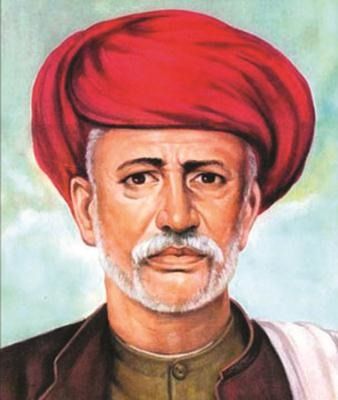
🧭 Introduction : Jyotirao Phule – The Flame of Social Awakening in India
Jyotirao Phule was not just a reformer—he was a revolution in human form. Born in 1827 in Pune, Maharashtra, into the socially marginalized Mali caste, Phule rose to become one of India’s most fearless voices against caste oppression, gender inequality, and religious orthodoxy. His life was a relentless pursuit of justice, education, and dignity for the oppressed. In an era dominated by Brahminical dominance and patriarchal norms, Jyotirao Phule dared to ask: Who decides who is superior? Why must women and Shudras remain in darkness? And most importantly, How can education become the torchlight of liberation?
Phule’s journey began with a personal insult. Invited to a Brahmin friend’s wedding, he was humiliated and asked to leave upon discovery of his caste. That moment of exclusion became the spark that ignited a lifelong mission. He realized that social inequality was not just a tradition—it was a system built on ignorance, fear, and control. And he vowed to dismantle it, brick by brick.
🔹 Education as Emancipation
In 1848, Jyotirao Phule, along with his wife Savitribai Phule, opened the first school for girls in Pune at Bhide Wada. This was not just a school—it was a rebellion. At a time when educating women was considered sinful, Phule trained Savitribai to become India’s first female teacher. They faced stones, abuse, and threats. Yet they persisted. Phule believed that education was the most powerful weapon against caste and gender tyranny.
He later opened schools for Dalits, Muslims, and children from marginalized communities, challenging the monopoly of Brahminical education. His vision was clear: “Let knowledge flow to every doorstep, not just to the privileged.”
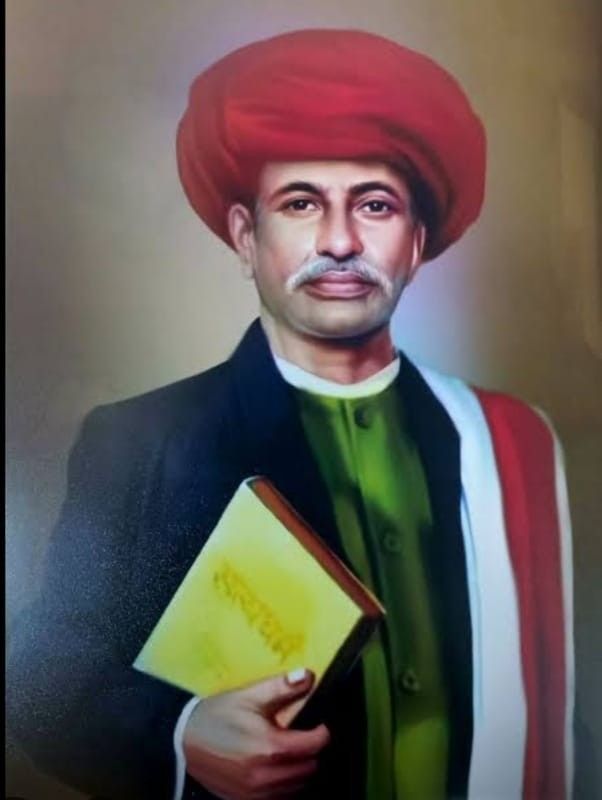
🔹 Satyashodhak Samaj: Truth as Revolution
In 1873, Jyotirao Phule founded the Satyashodhak Samaj (Truth-Seekers Society). Its mission was radical:
- Reject Brahminical rituals and priesthood
- Promote inter-caste marriages and widow remarriage
- Encourage rational thinking and social equality
- Open membership to all castes and religions
The Samaj became a sanctuary for the oppressed. It was a space where truth replaced tradition, and reason replaced ritual. Phule’s leadership was not about dominance—it was about empowerment.
🔹 Literary Legacy: Words That Wounded Injustice
Phule was a prolific writer. His works were sharp, fearless, and deeply rational. His most famous book, Gulamgiri (Slavery), published in 1873, compared caste oppression in India to slavery in America. He dedicated it to American abolitionists, drawing global parallels between racial and caste injustice.
Other notable works include:
- Shetkaryacha Asud (The Cultivator’s Whipcord) – a scathing critique of landlordism and caste exploitation
- Brahmananche Kasab (The Craft of the Brahmins) – a satire on religious manipulation
- Trutiya Ratna (The Third Eye) – a dialogue on education and liberation
Phule’s writings were in Marathi, accessible to the masses, and rich in humanism, ethics, and social critique.
🔹 Partnership with Savitribai Phule: Equality in Action
Savitribai was not just Jyotirao’s wife—she was his co-reformer, colleague, and equal. Together, they:
- Opened shelters for widows and pregnant rape victims
- Adopted a child from a Brahmin widow and raised him as their own
- Fought against child marriage, sati, and female infanticide
Their partnership remains a model of gender equality in activism. In a society that silenced women, they gave them a voice—and a classroom.
🔹 Critique of Religion and Caste
Phule was a fierce critic of Brahminical Hinduism. He argued that:
- The caste system was a tool of exploitation
- Religious myths were created to enslave Shudras and women
- True religion must be based on equality, compassion, and reason
He challenged the idea that Brahmins were divinely superior. He wrote, “If God created all, why did He make some untouchable?” His rationalism laid the foundation for anti-caste movements, later carried forward by Dr. B.R. Ambedkar.
🔹 Legacy and Impact
Jyotirao Phule died in 1890, but his legacy lives on:
- He is honored as Mahatma Phule in Maharashtra and across India
- His ideas inspired Dalit, OBC, and feminist movements
- His schools and writings laid the groundwork for modern social justice
Today, Phule is remembered not just as a reformer, but as a revolutionary thinker who reimagined India’s social soul. His vision of an egalitarian society—where caste, gender, and religion do not determine worth—remains a guiding light.
Jyotirao Phule was not a man of his time—he was a man ahead of it. He saw injustice not as fate, but as a challenge. He believed that truth must be sought, not inherited, and that education must liberate, not indoctrinate. His life was a testament to the power of courage, compassion, and conviction.
Table of Contents
📜 Imagined Speech by Jyotirao Phule
Date: 28 September 1873
Location: Pune, Maharashtra
Occasion: Founding of the Satyashodhak Samaj
Audience: Over 300 Bahujan farmers, women, workers, and students gathered in an open courtyard near Vishrambaug Wada, Pune.
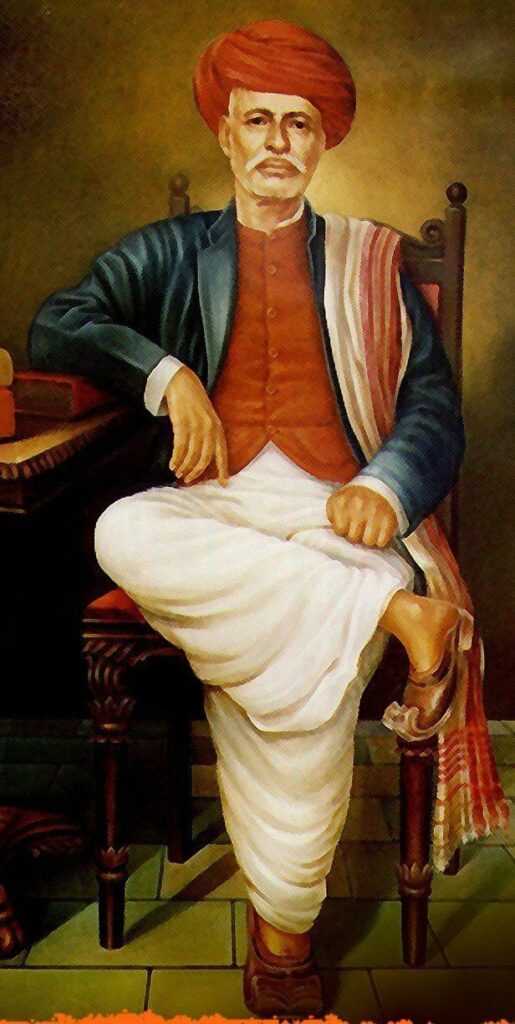
“Brothers and Sisters of Bharat, my fellow Shudras and Ati-Shudras, my courageous mothers and daughters, my fellow seekers of truth…”
I, Jyotirao Phule, stand before you not as a leader, but as your brother. I do not wear the sacred thread. I do not chant mantras. I do not claim to be holy. I am a son of the soil, like you. I till the land, I sweat under the sun, and I have seen the pain in your eyes—the pain of being born into a world that treats you as less than human.
Today, on this sacred day of 28 September 1873, we gather not to worship idols, but to awaken our minds. We gather not to perform rituals, but to seek truth. We gather not to beg for mercy, but to demand justice.
This is the birth of the Satyashodhak Samaj—the Society of Truth Seekers. And this is our mission:
To destroy the chains of caste.
To educate every child, girl or boy.
To uplift the widow, the farmer, the laborer.
To replace fear with reason.
To replace superstition with science.
To replace silence with speech.
🧱 The Lie of Caste
My friends, we have been told that we are born to serve. That we are impure. That we must not read, must not question, must not dream. But I ask you—who wrote these rules? Who decided that one man is born to rule and another to obey?
It was not God. It was not nature. It was the Brahmin, who wrote the scriptures to serve his own greed. He said, “You are Shudra. You are untouchable.” And we believed him.
But I say to you today: We are not born to be slaves. We are born to be free.
📚 The Power of Education
When I taught my wife, Savitribai Phule, to read, people laughed. They said, “A woman with a book is a curse.” But I saw in her eyes the fire of knowledge. And when she opened the first school for girls, that fire spread.
Today, we have opened 18 schools. We have taught girls, Dalits, Muslims, and laborers. We have shown that education is not a privilege—it is a weapon. A weapon to fight ignorance. A weapon to fight fear. A weapon to fight caste.
Let every child in this land hold a book, not a broom. Let every girl walk into a classroom, not into a child marriage. Let every widow live with dignity, not die on a pyre.
🛕 The Business of Religion
The Brahmin says, “Give me alms, and I will give you heaven.” But I ask—what heaven is this, where the poor starve and the priest feasts?
Religion has become a business, and we are its customers. The Brahmin sells us fear. He sells us rituals. He sells us lies.
But we are not customers—we are creators. We are the ones who build the temples, grow the food, and carry the nation on our backs. We do not need a priest to speak to God. We need truth, reason, and compassion.
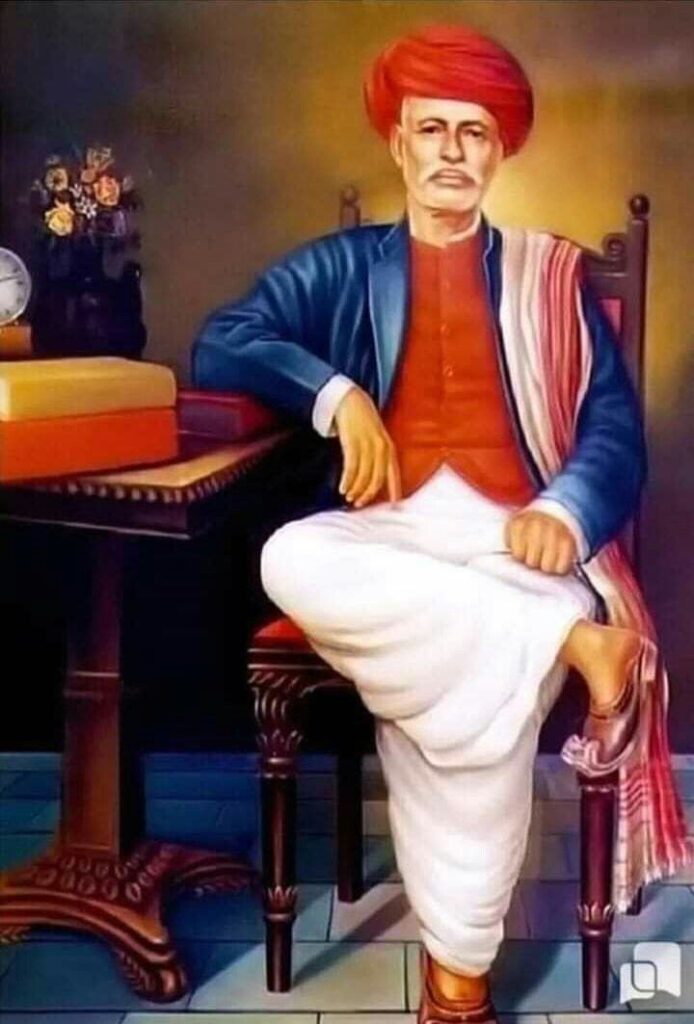
🌾 The Farmer’s Whipcord
In my book, Shetkaryacha Asud, I wrote about the farmer’s pain. He works from dawn to dusk. He feeds the nation. And yet, he is buried in debt, beaten by landlords, and ignored by rulers.
I say to the British government: If you truly wish to civilize India, begin with the farmer. Give him education. Give him water. Give him justice.
And I say to my fellow farmers: Do not bow your heads. Raise your voices. Organize. Educate. Agitate.
🧭 The Path Forward
This is not the end. This is the beginning. The Satyashodhak Samaj will:
- Conduct marriages without Brahmin priests
- Educate every child, regardless of caste
- Shelter widows and protect women
- Publish books and pamphlets in Marathi
- Train leaders from among the Bahujan
We will not wait for permission. We will not ask for blessings. We will build our own path.
❤️ A Personal Pledge
I, Jyotirao Phule, pledge to spend every breath of my life in service of truth. I will not rest until:
- Every child is educated
- Every woman is respected
- Every caste is abolished
- Every human is free
I do not seek your applause. I seek your awakening.
Let us walk together—not behind anyone, not beneath anyone, but side by side. Let us build a new Bharat, where truth is the highest ritual, and equality is the only religion.
The crowd of over 300 people—farmers in dusty dhotis, women in simple saris, young boys clutching slates—rose to their feet. Some wept. Some raised their fists. All felt the fire of something new. A revolution had begun—not with swords, but with words. Not with violence, but with vision.
🧒 Early Life and Background of Jyotirao Phule
Jyotirao Phule, born on 11 April 1827 in Pune, Maharashtra, was not merely a product of his time—he was a defier of it. In a deeply stratified society governed by caste hierarchies and patriarchal norms, Phule emerged as a beacon of resistance, rationality, and reform. His early life, though rooted in a humble and marginalized background, laid the foundation for one of the most transformative journeys in Indian social history.
🌱 Family Origins and Caste Identity
Jyotirao Phule was born into the Mali caste, traditionally associated with gardening and horticulture. The Malis were classified as Shudras, the lowest of the four varnas in the Hindu caste system. Though not considered “untouchables,” Shudras were still subjected to systemic discrimination, denied access to education, and excluded from religious and social privileges reserved for the upper castes.
His father, Govindrao Phule, was a vegetable vendor and a small-scale farmer. The family’s original surname was Gorhe, but they adopted the name “Phule” (meaning “flower”) in keeping with their caste’s association with floriculture. Despite their modest means, the Phule family was relatively better off than many others in their community, which allowed Jyotirao to receive a basic education—an opportunity denied to most Shudras at the time.
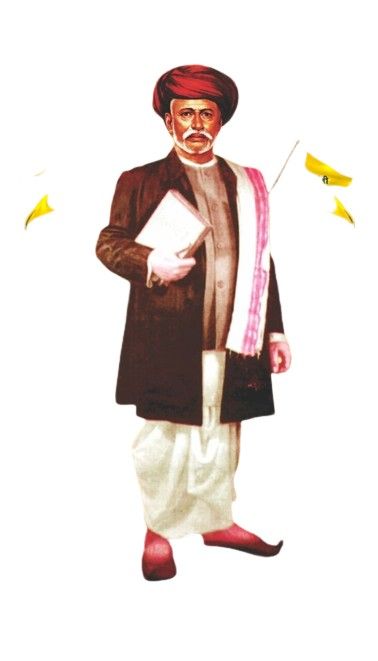
📚 Education: A Radical Awakening
Jyotirao Phule’s formal education began at the Scottish Mission High School in Pune, where he enrolled in 1841 and graduated in 1847. This was a rare achievement for someone of his caste. The school, run by Christian missionaries, emphasized liberal values, rational thought, and the importance of education for all—regardless of caste or gender.
It was here that Phule was introduced to Western philosophy, Enlightenment ideals, and the writings of Thomas Paine, Rousseau, and Voltaire. These thinkers profoundly influenced his worldview. He began to question the legitimacy of the caste system, the authority of Brahminical scriptures, and the moral contradictions of Hindu orthodoxy.
A pivotal moment occurred when Phule attended the wedding of a Brahmin friend. Upon discovering his caste, the groom’s relatives publicly humiliated and expelled him from the ceremony. This incident was a turning point in his life. It exposed the deep-rooted prejudice of the caste system and ignited in him a lifelong mission to eradicate social inequality.
💍 Marriage to Savitribai Phule: A Revolutionary Partnership
At the age of 13, Jyotirao Phule was married to Savitribai, who was just nine years old at the time. While child marriage was common, what followed was extraordinary. Recognizing the transformative power of education, Jyotirao personally educated Savitribai, defying societal norms that forbade women—especially from lower castes—from learning to read or write.
Savitribai would go on to become India’s first female teacher, and together, the couple would become pioneers of women’s education in India. Their marriage was not just a union of two individuals—it was a partnership in revolution.
🧠 Intellectual Influences and Early Writings
Phule’s early exposure to Christian egalitarianism, Enlightenment rationalism, and Indian reformist thought shaped his intellectual trajectory. He began to write and speak publicly against:
- The Brahminical monopoly over religion and education
- The denial of education to women and lower castes
- The ritualistic exploitation of the masses by upper-caste priests
His early essays and speeches were circulated among reformist circles in Pune and Bombay. He argued that true religion must be based on morality, not ritual, and that education was the key to liberation.
🏫 Founding the First School for Girls (1848)
In 1848, at the age of 21, Jyotirao Phule and Savitribai opened the first school for girls in Pune at Bhide Wada, the home of a progressive merchant, Tatyasaheb Bhide. This was a radical act. Orthodox Hindus viewed women’s education as a threat to tradition. The Phules faced:
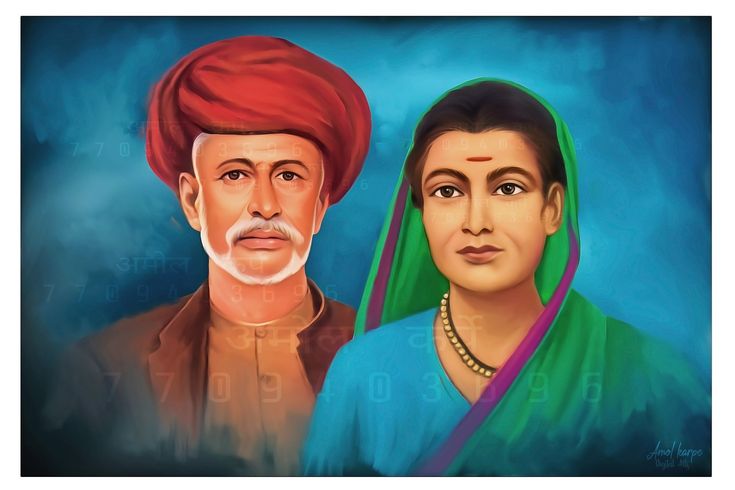
- Social ostracism
- Verbal and physical abuse
- Family rejection—Phule was even disowned by his father
Yet they persisted. Over the next few years, they opened multiple schools for girls, Dalits, and Muslims. Phule also established night schools for working-class men and women.
🧹 Early Social Reform and Anti-Caste Activism
Phule’s early activism focused on exposing the injustices of the caste system. He believed that:
- The Brahminical scriptures were tools of oppression
- The Puranas and Manusmriti were fabricated to justify inequality
- The Aryan invasion had subjugated indigenous people (whom he called “Bahujans”)
In 1869, he published Brahmananche Kasab (The Craft of the Brahmins), a scathing critique of priestly exploitation. He argued that Brahmins had created a false religious order to maintain their dominance.
🧾 Gulamgiri (Slavery) – 1873
In 1873, Phule published his magnum opus, Gulamgiri, which means “Slavery.” In this groundbreaking work, he:
- Compared the plight of Shudras in India to African slaves in America
- Dedicated the book to American abolitionists like Thomas Jefferson and Abraham Lincoln
- Called for social revolution through education, self-respect, and unity
Gulamgiri was not just a book—it was a manifesto for liberation. It laid the ideological foundation for future anti-caste movements, including those led by Dr. B.R. Ambedkar.
🏛️ Founding of Satyashodhak Samaj (Truth-Seekers Society) – 1873
The same year, Phule founded the Satyashodhak Samaj, an organization dedicated to:
- Social equality
- Abolition of caste-based discrimination
- Promotion of rationalism and secularism
- Empowerment of women and the oppressed
The Samaj rejected Brahminical rituals and encouraged inter-caste marriages, widow remarriage, and education for all. It became a grassroots movement that challenged the religious and social order of the time.
🧑🏫 Educational Philosophy and Legacy
Phule believed that education was the great equalizer. He argued that:
- Knowledge must be practical and moral, not just religious
- Schools must be accessible to all, especially women and Dalits
- Teachers must be trained to serve, not dominate
He established boarding schools, libraries, and reading rooms. His educational model emphasized:
- Critical thinking
- Social awareness
- Gender equality
His work laid the foundation for universal education in India, decades before it became state policy.
🧭 Conclusion: The Seed That Became a Forest
Jyotirao Phule’s early life was marked by humiliation, resistance, and awakening. From a Shudra boy insulted at a wedding to a visionary who redefined Indian society, his journey is a testament to the power of education, courage, and compassion.
His early experiences shaped his lifelong mission:
- To dismantle caste hierarchy
- To educate the oppressed
- To build a just and equal society
Phule’s legacy is not just historical—it is revolutionary. He remains a guiding light for every movement that seeks to liberate minds, challenge injustice, and awaken truth.
📚 Pioneering Women’s Education: Jyotirao Phule’s Revolutionary Legacy
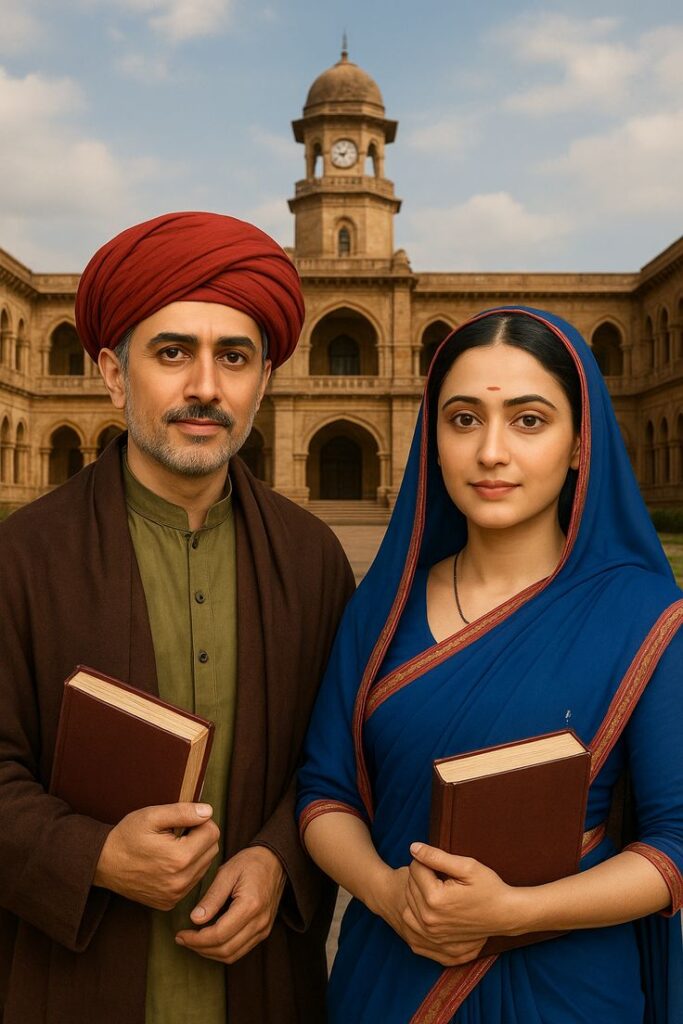
Jyotirao Phule, one of India’s greatest social reformers, ignited a revolution in education that challenged centuries of caste and gender oppression. His work in pioneering women’s education—especially through the establishment of the first girls’ school in Pune in 1848—was not just a reformist act; it was a radical declaration of equality in a deeply hierarchical society. Alongside his wife, Savitribai Phule, Jyotirao Phule laid the foundation for inclusive education in India, empowering women, Dalits, and marginalized communities through knowledge.
🏫 The First Girls’ School at Bhide Wada (1848)
In 1848, Jyotirao Phule and Savitribai Phule opened the first school for girls in India at Bhide Wada, the home of a progressive merchant named Tatyasaheb Bhide, located in Budhwar Peth, Pune. This was a revolutionary act in a society where:
- Women were denied education
- Brahminical orthodoxy considered female literacy sinful
- Lower castes were excluded from learning
Phule trained Savitribai, who had no formal education, to become a teacher. She became India’s first female teacher, and together they began teaching girls from diverse backgrounds—Hindus, Muslims, Dalits, and widows.
🔥 Backlash and Resistance
The Phules faced severe backlash:
- Orthodox Hindus hurled stones and dung at Savitribai on her way to school
- Jyotirao was disowned by his father for defying caste norms
- They were socially ostracized, threatened, and ridiculed
Yet they persisted. Their courage was rooted in conviction. Jyotirao Phule believed that education was the key to liberation, famously declaring:
“Educate women and the oppressed, and you will awaken a nation.”
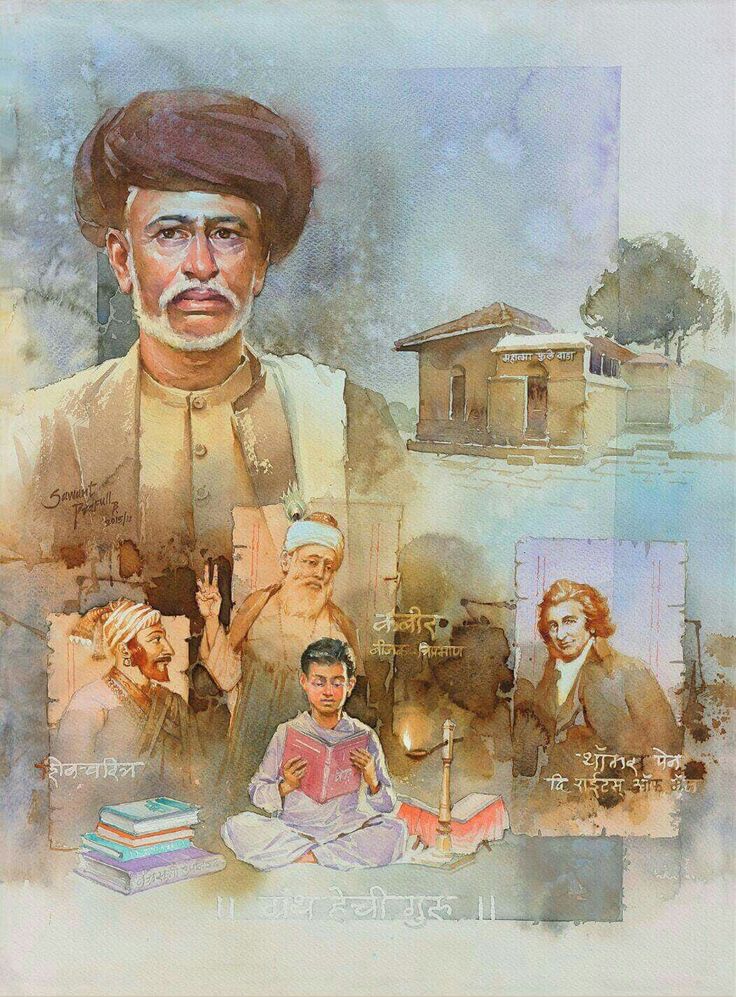
🧠 Philosophy Behind Women’s Education
Jyotirao Phule’s vision was radical:
- Education must be universal, not caste-bound
- Women’s empowerment begins with literacy
- Social reform is impossible without intellectual awakening
He argued that Brahminical control over education was a tool of oppression. By educating women, Phule sought to:
- Break patriarchal control over knowledge
- Enable women to resist child marriage, sati, and domestic abuse
- Create a generation of mothers who could educate their children
👩🏫 Savitribai Phule: Co-Reformer and Icon
Savitribai was not just Jyotirao’s wife—she was his equal partner in revolution. She:
- Taught at multiple schools
- Wrote poems and essays advocating women’s rights
- Opened shelters for widows and pregnant rape victims
- Adopted a child from a Brahmin widow and raised him as their own
Her work extended beyond education into feminist activism, making her a pioneer of India’s women’s movement.
🏛️ Expansion of Schools and Curriculum
Between 1848 and 1852, the Phules opened 18 schools across Pune. These schools:
- Taught reading, writing, mathematics, and moral science
- Welcomed students from all castes and religions
- Employed female teachers, trained by Savitribai
Phule emphasized practical education over rote learning. He believed that knowledge must liberate, not indoctrinate.
📜 Literary Contributions Supporting Education
Jyotirao Phule’s writings reinforced his educational mission. In Gulamgiri (Slavery) (1873), he compared caste oppression to slavery and dedicated the book to American abolitionists. In Shetkaryacha Asud (The Cultivator’s Whipcord) (1883), he exposed the exploitation of farmers and linked it to lack of education.
His works argued that:
- Ignorance breeds inequality
- Education is the foundation of self-respect
- Women and Shudras must reclaim their right to learn
🧹 Intersection of Education and Anti-Caste Activism
Phule’s educational efforts were inseparable from his anti-caste activism. He believed that:
- Brahminical control over knowledge perpetuated caste hierarchy
- Educating Dalits and women would dismantle social stratification
- Schools must become spaces of resistance, not just instruction
His Satyashodhak Samaj (Truth-Seekers Society), founded in 1873, promoted education as a tool for social transformation, rejecting Brahminical rituals and advocating rational thought.
🧭 Legacy and Impact
Jyotirao Phule’s pioneering work in women’s education:
- Inspired Dr. B.R. Ambedkar, who called education “the milk of a lioness”
- Laid the foundation for universal education policies in modern India
- Elevated Savitribai Phule as a symbol of feminist resistance
- Sparked Dalit and Bahujan movements centered on knowledge and dignity
Today, Phule is honored as Mahatma Phule. His schools, writings, and philosophy continue to guide educators, activists, and reformers.
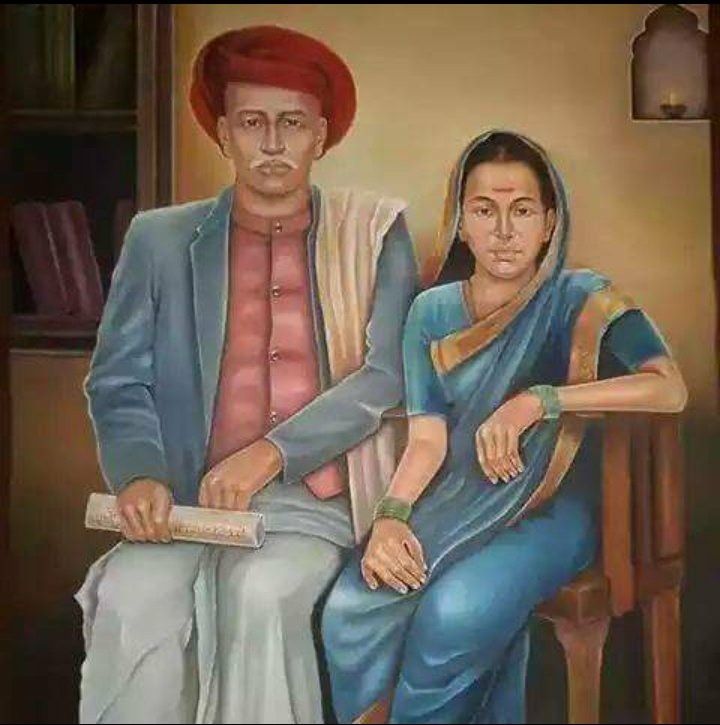
🕯️ Conclusion: Educate to Liberate
Jyotirao Phule’s legacy in pioneering women’s education is not just historical—it is revolutionary. He saw education as the first step toward freedom, the first weapon against injustice, and the first light in the darkness of oppression.
His work reminds us that:
- Empowering women transforms society
- Educating the oppressed awakens nations
- True reform begins in the classroom
In every girl who learns, in every Dalit who reads, and in every teacher who defies tradition—Jyotirao Phule lives On.
🧹 Jyotirao Phule’s Fight Against Caste and Brahminical Dominance
Part 1: Introduction – The Rebel Who Rewrote India’s Social Script
In the annals of Indian history, few figures stand as defiantly transformative as Jyotirao Govindrao Phule. Born in 1827 in Pune, Maharashtra, into the socially marginalized Mali caste, Phule rose to become one of the most radical voices against caste oppression, Brahminical patriarchy, and religious orthodoxy. His life was not just a protest—it was a revolution of ideas, institutions, and imagination.
At a time when the Brahminical order dominated every aspect of Indian society—from education and religion to politics and culture—Phule dared to ask:
“Who gave the Brahmins the right to rule over others? Why must Shudras and women remain in ignorance and servitude?”
These questions were not rhetorical. They were the foundation of a lifelong mission to dismantle caste hierarchy, liberate the oppressed, and redefine Indian identity.
🔥 The Spark: Humiliation at a Brahmin Wedding
Phule’s awakening began with a personal insult. As a young man, he was invited to a Brahmin friend’s wedding. Upon discovering his caste, the groom’s relatives publicly humiliated and expelled him from the ceremony. This moment was a turning point. Phule realized that caste was not just a social category—it was a system of exclusion, humiliation, and control.
This experience ignited a fire that would never be extinguished. Phule began to study religious texts, history, and social structures—not to accept them, but to challenge their legitimacy.
🧠 The Intellectual Foundation: Rationalism and Counter-History
Phule’s critique of Brahminism was rooted in rationalism, historical reinterpretation, and moral philosophy. He argued that:
- The Brahminical caste system was a man-made construct, not a divine order.
- Religious myths were fabricated to justify Brahmin superiority and Shudra servitude.
- True religion must be based on equality, compassion, and reason, not ritual and hierarchy.
He proposed a counter-history of India:
- The Shudras and Ati-Shudras were the original inhabitants of the subcontinent.
- The Aryans, led by Brahmins, were foreign invaders who subjugated indigenous people.
- The Manusmriti, Puranas, and other texts were political tools, not spiritual guides.
This reinterpretation was revolutionary. It empowered the Bahujan identity, challenged centuries of domination, and laid the foundation for future anti-caste thinkers like Dr. B.R. Ambedkar.
📖 Gulamgiri (Slavery) – 1873: A Manifesto of Liberation
In 1873, Phule published his magnum opus, Gulamgiri, meaning “Slavery.” This book was not just a critique—it was a call to arms. Structured as a dialogue between Phule and a fictional character named Dhondiba, the book:
- Exposed the ideological foundations of caste oppression
- Compared caste slavery in India to racial slavery in America
- Dedicated itself to American abolitionists, including Thomas Jefferson and Abraham Lincoln
Phule wrote:
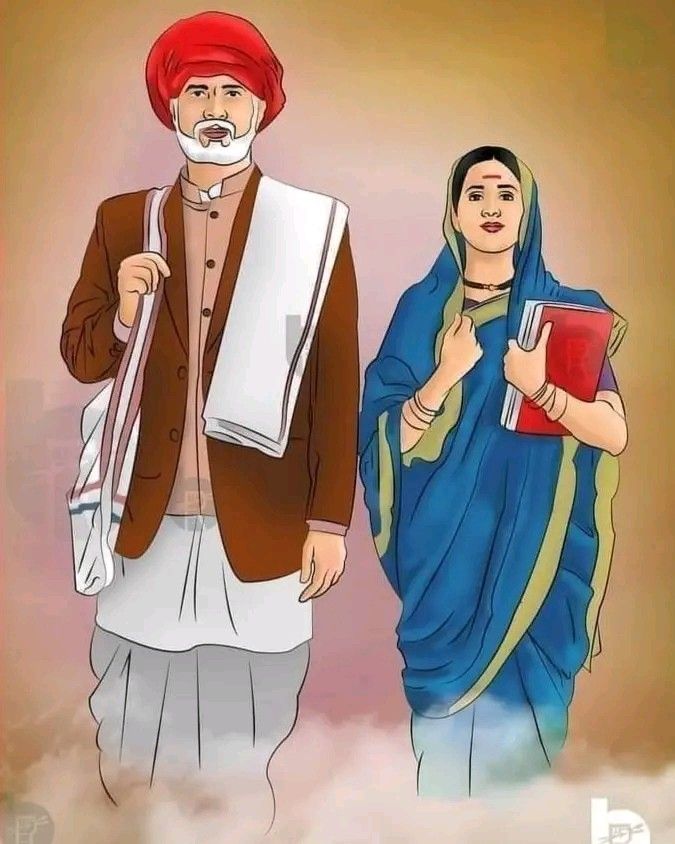
“The Brahmins have cunningly created a web of lies to keep us in chains. Let us tear it apart with truth.”
Gulamgiri argued that:
- The Shudras were enslaved not by force, but by mythology and ritual.
- The Brahmin priesthood was a self-serving elite, maintaining power through fear and ignorance.
- Education and unity were the keys to liberation.
This book became the intellectual foundation of India’s anti-caste movement. It was studied, quoted, and revered by reformers, revolutionaries, and scholars across generations.
🏛️ Satyashodhak Samaj: Institutionalizing the Rebellion
In the same year as Gulamgiri, Phule founded the Satyashodhak Samaj (Truth-Seekers Society). This organization was a direct challenge to Brahminical dominance. Its goals were:
- To reject Brahminical rituals and priesthood
- To promote inter-caste marriage and widow remarriage
- To educate the oppressed and build self-respect
- To create a rational, egalitarian society
The Samaj welcomed Shudras, Dalits, Muslims, and women. It became a grassroots movement, empowering farmers, laborers, and marginalized communities. It was not just a social organization—it was a revolutionary institution.
📚 Literary Arsenal: More Than Gulamgiri
Phule’s fight against caste was not limited to Gulamgiri. His other works include:
- Shetkaryacha Asud (The Cultivator’s Whipcord) – a critique of landlord and Brahmin exploitation of farmers
- Brahmananche Kasab (The Craft of the Brahmins) – a satire on priestly manipulation
- Trutiya Ratna (The Third Eye) – a dialogue on education and liberation
These texts were written in Marathi, accessible to the masses, and rich in rationalism, ethics, and social critique. They became tools of intellectual resistance, challenging the monopoly of Brahminical knowledge.
👩👦 Intersection with Gender and Education
Phule’s fight against caste was deeply intertwined with his advocacy for women’s education. He believed that:
- Women were doubly oppressed—by caste and patriarchy.
- Educated mothers would raise liberated children.
- Widows and rape victims deserved shelter and dignity.
His partnership with Savitribai Phule was revolutionary. Together, they:
- Opened India’s first school for girls in 1848
- Created shelters for widows and pregnant rape victims
- Adopted a child from a Brahmin widow and raised him as their own
Their work laid the foundation for feminist activism in India.
🌍 Global Parallels and Influence
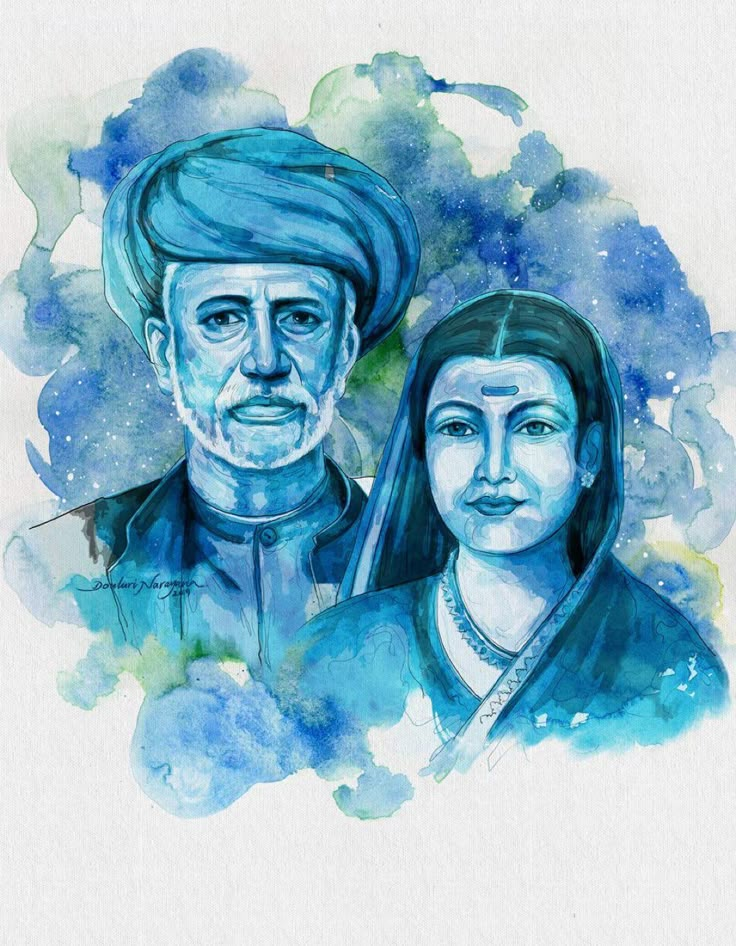
By dedicating Gulamgiri to American abolitionists, Phule positioned India’s caste struggle within a global framework of liberation. He saw:
- Caste as a form of slavery, akin to racial oppression
- Education as the path to freedom, just as it was for African Americans
- Solidarity across struggles, from India to the U.S.
This global vision made Phule a transnational thinker, decades ahead of his time.
🧭 Legacy and Modern Relevance
Phule’s critique of caste and Brahminism:
- Inspired Dr. B.R. Ambedkar, who expanded Phule’s ideas into constitutional reform
- Laid the foundation for Dalit, Bahujan, and feminist movements
- Continues to influence academics, activists, and educators
Today, Phule is honored as Mahatma Phule, and his works are studied in universities, quoted in protests, and celebrated in literature.
🔚 Conclusion: Truth as Revolution
Jyotirao Phule’s fight against caste and Brahminical dominance was a revolution of ideas. He redefined religion, history, and society through the lens of equality and reason. His work laid the foundation for:
- Dalit and Bahujan movements
- Ambedkarite thought
- Modern social justice activism
Phule’s message remains timeless:
📖 Part 2: Gulamgiri – Chapter-by-Chapter Breakdown
Published in 1873, Gulamgiri (Slavery) is Jyotirao Phule’s most iconic work—a scathing critique of caste oppression and Brahminical ideology. Structured as a dialogue between Phule and a fictional character named Dhondiba, the book is divided into 16 chapters, each exposing a different facet of religious manipulation, social injustice, and historical distortion.
🔹 Chapter 1–2: The Myth of Divine Brahminhood
Phule begins by questioning the origin myths of Brahmins. He argues that:
- Brahmins were foreign Aryan invaders, not divine beings.
- The story of Brahma creating Brahmins from his mouth is a fabrication to justify superiority.
- Shudras were the original inhabitants of India, subjugated through violence and deceit.
Phule uses satire and logic to dismantle the Manusmriti’s caste hierarchy, calling it a manual of slavery.
🔹 Chapter 3–5: Rituals as Tools of Control
These chapters expose how religious rituals—from yajnas to temple worship—are designed to:
- Extract wealth from the poor
- Maintain Brahminical dominance
- Create fear and dependency
Phule writes:
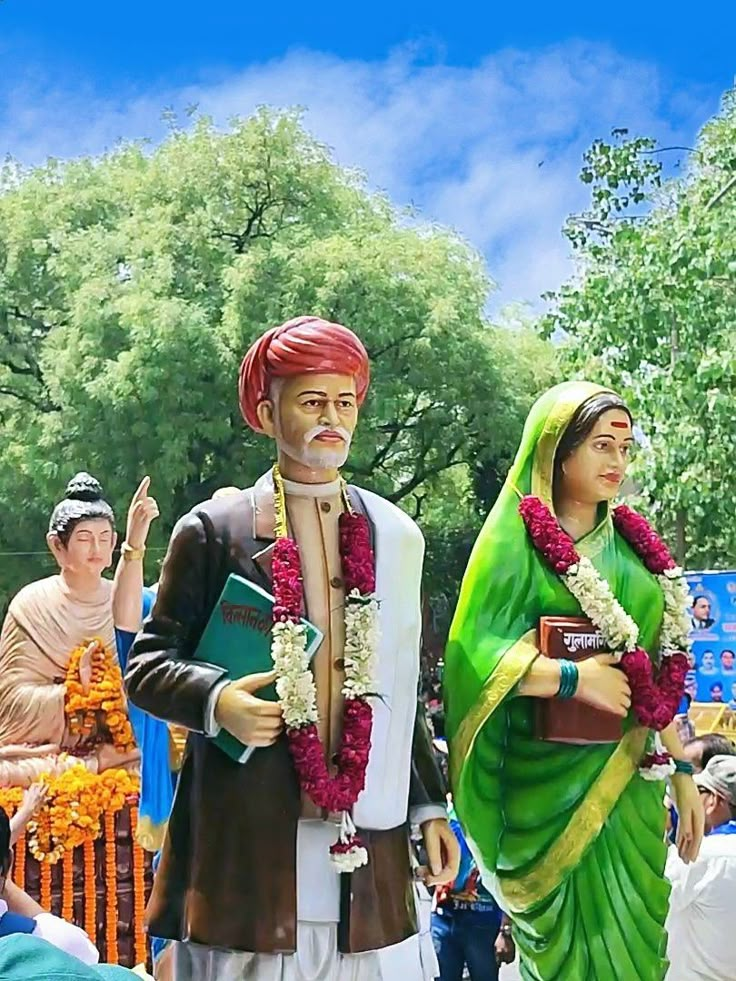
“The priest does not serve God. He serves himself, feeding on the ignorance of the masses.”
He urges Shudras to reject rituals and embrace reason and morality.
🔹 Chapter 6–8: The Brahmin and the Farmer
Phule contrasts the labor of farmers with the idleness of Brahmins:
- Farmers toil in the sun, yet remain poor and uneducated.
- Brahmins live off alms, yet claim spiritual superiority.
He calls for economic justice, arguing that:
- Land must be redistributed
- Farmers must be educated
- Brahmins must be held accountable
🔹 Chapter 9–11: Women and Caste
Phule highlights the double oppression of women:
- Denied education
- Forced into child marriage
- Subjected to widowhood and ritual purity
He condemns practices like sati, dowry, and female infanticide, linking them to Brahminical patriarchy. He praises Savitribai Phule as a model of resistance.
🔹 Chapter 12–14: The False Gods
Phule critiques Hindu deities like Rama, Krishna, and Parashurama, arguing that:
- Their stories glorify violence and casteism
- They are used to justify Brahminical rule
- True divinity lies in justice, compassion, and equality
He proposes a new moral religion, based on truth and service, not mythology.
🔹 Chapter 15–16: Awakening the Shudras
The final chapters are a call to action:
- Shudras must unite, educate themselves, and reject Brahminical lies.
- They must build schools, read books, and form communities of resistance.
- Phule urges them to become Satyashodhaks—seekers of truth.
He ends with a poetic invocation:
“Awaken, O Shudra! The chains are in your mind. Break them with knowledge, and walk into the light.”
✍️ Literary Style and Impact
- Written in Marathi, accessible to common people
- Uses dialogue, satire, and historical analysis
- Dedicated to American abolitionists, linking caste to slavery
Gulamgiri became a foundational text for anti-caste movements, influencing Ambedkar, Periyar, and Dalit Panthers.
🏛️ Part 3: Satyashodhak Samaj – Structure, Strategy, and Impact
Founded in 1873, the Satyashodhak Samaj (Truth-Seekers Society) was Jyotirao Phule’s institutional response to caste oppression. It was not just a reformist group—it was a grassroots revolution, built on the principles of equality, rationalism, and self-respect.
🔹 Objectives of the Samaj
- Reject Brahminical priesthood and rituals
- Promote inter-caste marriage and widow remarriage
- Educate Shudras, Dalits, and women
- Encourage rational thinking and secular ethics
- Build a society based on truth, not tradition
Phule believed that social change must be organized, not just preached.
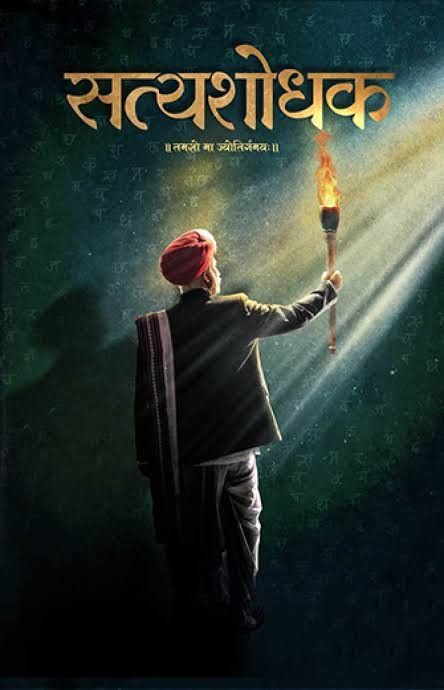
🔹 Membership and Inclusivity
The Samaj was open to:
- All castes, including Shudras, Ati-Shudras, Muslims, and Christians
- Women, who were given leadership roles
- Farmers, laborers, and artisans, not just urban elites
This inclusivity made it a mass movement, not a Brahmin-led reform club.
🔹 Activities and Programs
- Public lectures on caste, education, and morality
- Schools and night classes for girls and workers
- Marriage ceremonies without Brahmin priests
- Shelters for widows and rape victims
- Publication of pamphlets and books challenging orthodoxy
The Samaj created a parallel society, where truth replaced ritual, and reason replaced fear.
🔹 Leadership and Legacy
Phule trained a generation of Satyashodhaks, including:
- Savitribai Phule, who led women’s education
- Narayan Meghaji Lokhande, labor rights activist
- Gopal Baba Walangkar, early Dalit thinker
The Samaj influenced:
- Ambedkar’s Independent Labour Party
- Periyar’s Self-Respect Movement
- Bahujan Samaj Party and Dalit Panthers
Its legacy lives on in grassroots activism, educational reform, and anti-caste literature.
🔚 Conclusion: From Gulamgiri to Satyashodhak – A Complete Revolution
Jyotirao Phule’s fight against caste was not just intellectual—it was institutional. Through Gulamgiri, he exposed the lies. Through the Satyashodhak Samaj, he built the truth.
His revolution was:
- Spiritual, challenging false gods
- Social, empowering the oppressed
- Educational, awakening minds
- Political, laying the foundation for future movements
🔗 Part 4: Influence on Ambedkar and Modern Bahujan Movements
Jyotirao Phule’s ideas did not die with him in 1890. They became the intellectual foundation for India’s most powerful social justice movements—especially those led by Dr. B.R. Ambedkar, the architect of the Indian Constitution and the foremost Dalit thinker of the 20th century.
🔹 Ambedkar’s Intellectual Debt to Phule
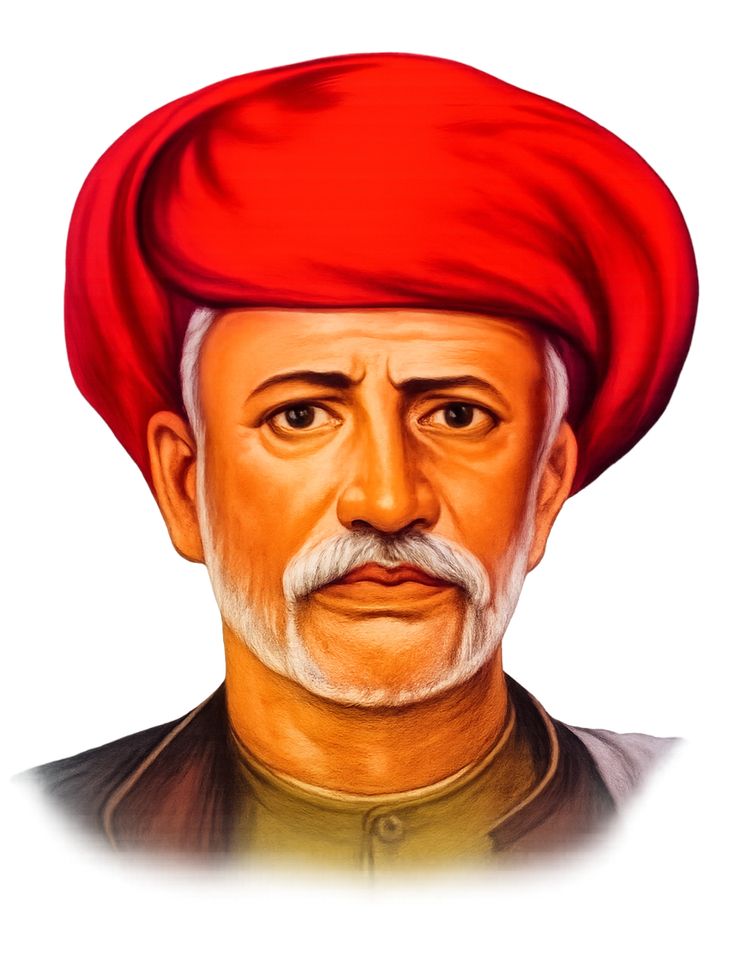
Ambedkar referred to Phule as one of his ideological ancestors. He adopted and expanded Phule’s core principles:
- Education as liberation
- Caste as a system of slavery
- Religion as a tool of oppression
- Rationalism as resistance
Ambedkar’s own writings—especially Annihilation of Caste and The Problem of the Rupee—echo Phule’s critique of Brahminical dominance. He built upon Phule’s vision by:
- Advocating constitutional safeguards for Dalits
- Promoting reservations in education and employment
- Leading mass conversions to Buddhism as a rejection of caste Hinduism
Phule laid the moral groundwork; Ambedkar built the legal architecture.
🔹 Dalit Panthers and Bahujan Samaj Party
In the 1970s, the Dalit Panthers emerged in Maharashtra, inspired by both Phule and Ambedkar. They:
- Used literature and protest to challenge caste violence
- Quoted Gulamgiri and Shetkaryacha Asud in their manifestos
- Called for Bahujan unity—a term Phule coined to mean “majority people” (Shudras, Ati-Shudras, Adivasis, Muslims)
Later, the Bahujan Samaj Party (BSP), founded by Kanshi Ram, adopted Phule’s vision of:
- Political power for the oppressed
- Social justice through representation
- Education and organization as tools of change
Phule’s ideas became electoral strategies, activist slogans, and cultural symbols.
🔹 Cultural Renaissance and Literature
Phule’s legacy also sparked a literary renaissance:
- Dalit autobiographies like Baluta and Joothan referenced Phule’s teachings
- Bahujan poets and playwrights reimagined Phule as a hero
- Festivals and memorials in Maharashtra celebrate Phule’s birth and death anniversaries
His image—often shown with a turban, book, and plough—became a symbol of resistance.
🔚 Conclusion: From Phule to Ambedkar to the People
Phule’s influence on Ambedkar and modern Bahujan movements is not just historical—it is alive. His ideas continue to:
- Shape policy debates
- Inspire grassroots activism
- Guide educational reform
Phule was the seed. Ambedkar was the tree. The Bahujan movement is the forest.
🌍 Part 5: Global Parallels and Philosophical Legacy
Jyotirao Phule was not just a national thinker—he was a global visionary. By dedicating Gulamgiri to American abolitionists, he positioned India’s caste struggle within a worldwide movement for human dignity.
🔹 Slavery and Caste: A Shared Structure
Phule saw clear parallels between:
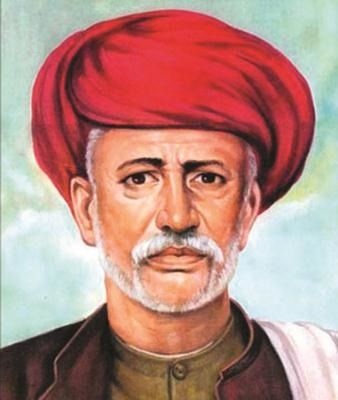
- African slavery in the U.S. and Shudra servitude in India
- Racial hierarchy and caste hierarchy
- Religious justification of slavery and mythological justification of caste
He wrote:
“The Shudra is not born inferior. He is made so by the Brahmin’s lies.”
This comparison was revolutionary. It allowed oppressed Indians to see themselves as part of a global struggle for freedom.
🔹 Philosophical Legacy: Rationalism and Humanism
Phule’s philosophy was built on:
- Rationalism – questioning all dogma
- Humanism – valuing every life equally
- Secular ethics – morality without ritual
He rejected:
- Fatalism
- Karma-based oppression
- Divine caste order
Instead, he proposed a moral religion based on:
- Truth
- Compassion
- Equality
🔹 Influence on Global Thinkers
Though not widely known outside India, Phule’s ideas resonate with:
- Frederick Douglass – who fought slavery with education
- Martin Luther King Jr. – who used nonviolence and moral clarity
- Paulo Freire – who saw education as liberation
Phule’s work deserves global recognition as part of the canon of liberation philosophy.
🔚 Conclusion: A Universal Message
Jyotirao Phule’s fight was not just for Shudras—it was for humanity. His message transcends caste, religion, and nation:
“Let us awaken the oppressed, wherever they are. Let us build a world where truth is the highest ritual.”
His legacy is not just Indian—it is universal.
🏛️ Jyotirao Phule and the Satyashodhak Samaj
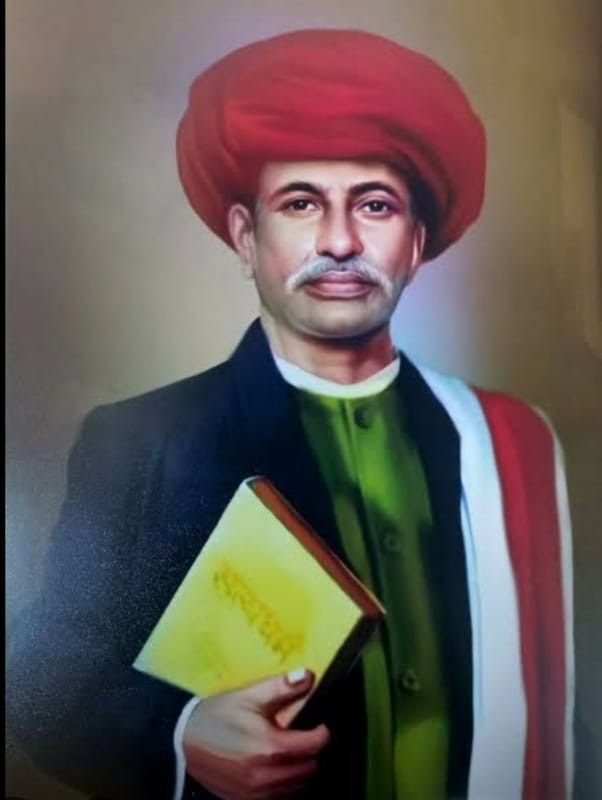
✍️ Section 1: Introduction – Why Jyotirao Phule Needed a Movement
Jyotirao Phule was not just a reformer—he was a visionary who understood that lasting change requires organized resistance. By the early 1870s, Phule had already:
- Opened schools for girls and Dalits
- Published Gulamgiri, comparing caste oppression to slavery
- Criticized Brahminical rituals and priesthood
But he saw that individual efforts weren’t enough. The caste system was not just a belief—it was a network of institutions, from temples to schools to marriage customs. To challenge it, Phule needed a counter-institution—a movement that could:
- Educate the oppressed
- Replace Brahminical rituals with rational alternatives
- Build a new moral order based on equality
Thus, he founded the Satyashodhak Samaj—a society of truth-seekers, not tradition-followers. It was a bold declaration: India’s future would not be built on blind faith, but on fearless truth.
📜 Section 2: Historical Context – Caste, Religion, and Reform in 19th-Century India
To understand the significance of the Satyashodhak Samaj, we must understand the social landscape of 19th-century India.
🔸 Caste Hierarchy
India’s caste system was rigid and oppressive:
- Brahmins monopolized education, religion, and power
- Kshatriyas and Vaishyas held land and wealth
- Shudras and Ati-Shudras were denied dignity, education, and rights
Phule, born into the Mali caste, experienced this firsthand. He was humiliated at a Brahmin wedding, sparking his lifelong rebellion.
🔸 Religious Orthodoxy
Hinduism, as practiced then, was dominated by:
- Mythological justifications for caste
- Rituals that excluded lower castes
- Priestly control over marriage, death, and festivals
Phule saw this as spiritual slavery. He believed that true religion must liberate, not enslave.
🔸 Reform Movements
While other reformers like Raja Ram Mohan Roy and Ishwar Chandra Vidyasagar focused on Brahmin-led reforms, Phule was unique:
- He spoke from the margins, not the center
- He focused on Shudras, Dalits, and women
- He built institutions outside the Brahminical framework
The Satyashodhak Samaj was not a reform of Hinduism—it was a rejection of its caste foundations.
🛕 Section 3: Founding of the Satyashodhak Samaj – Vision, Date, and First Steps
On 24 September 1873, in Pune, Jyotirao Phule founded the Satyashodhak Samaj. It wasn’t just an organization—it was a moral uprising.
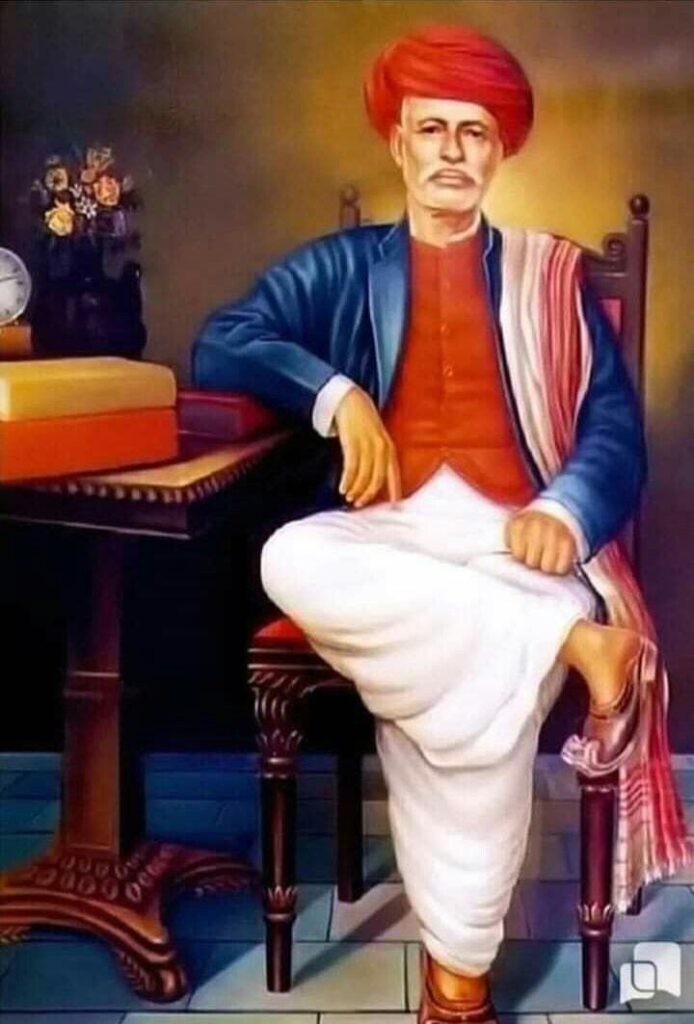
🔸 The Name: Satyashodhak Samaj
“Satyashodhak” means truth-seeker. Phule believed that truth had been buried under centuries of myth, ritual, and caste lies. The Samaj was a call to:
- Seek truth through reason
- Reject blind faith
- Build a society based on equality
🔸 Founding Members
The Samaj began with a small group of committed individuals:
- Jyotirao Phule as founder and guide
- Savitribai Phule as head of the women’s wing
- Narayan Meghaji Lokhande, labor rights activist
- Gopal Baba Walangkar, early Dalit writer
They met in homes, schools, and public halls—anywhere truth could be spoken freely.
🔸 First Actions
The Samaj immediately began:
- Conducting marriages without Brahmin priests
- Opening schools for girls and Dalits
- Publishing pamphlets in Marathi to awaken the masses
It was a grassroots revolution, built not on wealth or power, but on conviction and courage.
🔹 Section 4: Core Principles – Truth, Equality, and Rationalism
The Satyashodhak Samaj, founded by Jyotirao Phule, was not just a social reform group—it was a moral revolution. Its foundation rested on four uncompromising principles:
🕊️ 1. Satyashodhak Dharma – The Religion of Truth
Phule rejected the idea that religion must be tied to rituals, priests, and caste. He proposed Satyashodhak Dharma, a belief system based on:
- Truth over tradition
- Morality over mythology
- Compassion over caste
In this new dharma, there were no gods to fear, no priests to obey, and no rituals to perform. Only ethical living, social justice, and human dignity mattered.
“Let truth be your temple, and justice your prayer,” Phule wrote.
🧠 2. Rationalism and Scientific Temper
Phule believed that reason must replace superstition. The Samaj encouraged:
- Questioning of scriptures
- Debating religious customs
- Rejecting blind faith
Members were urged to read, think, and challenge authority. Phule saw education as the path to rationalism, and rationalism as the path to liberation.
🤝 3. Equality and Self-Respect
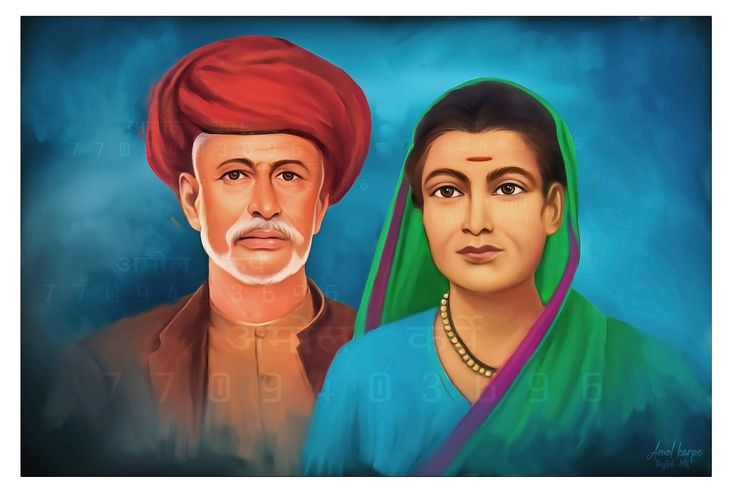
The Samaj declared that:
- No human is born inferior
- Caste is a lie
- Self-respect is a right
This was revolutionary in a society where Shudras were taught to accept humiliation as fate. Phule taught them to walk with pride, speak with courage, and live with dignity.
🌍 4. Bahujan Unity
Phule coined the term Bahujan—meaning “majority people”—to unite:
- Shudras
- Ati-Shudras
- Adivasis
- Muslims and Christians
- Women from all backgrounds
He believed that Bahujan unity was the key to dismantling Brahminical dominance. The Samaj became a platform where the oppressed found each other—and found their voice.
🔹 Section 5: Structure and Leadership – Who Built the Samaj
The Satyashodhak Samaj was built not by elites, but by ordinary people with extraordinary courage. Its structure was democratic, inclusive, and deeply rooted in Phule’s vision.
🧑🏫 Jyotirao Phule – Founder and Philosopher
Phule was the intellectual architect of the Samaj. He:
- Wrote its principles
- Led its meetings
- Trained its members
- Defended it against critics
He was not just a leader—he was a mentor, guide, and moral compass.
👩🏫 Savitribai Phule – Women’s Wing and Co-Reformer
Savitribai was the heart of the Samaj’s women’s movement. She:
- Trained female teachers
- Led women’s education programs
- Organized shelters for widows
- Conducted Satyashodhak marriages
She proved that women were not just victims—they were leaders.
👥 Key Members and Allies
- Narayan Meghaji Lokhande: Labor rights activist, brought working-class voices into the Samaj.
- Gopal Baba Walangkar: Early Dalit writer, inspired by Phule’s teachings.
- Shahu Maharaj (later): Royal patron who revived and expanded the Samaj.
The Samaj had no caste-based hierarchy. Leadership was based on commitment, not birth.
🏠 Meeting Spaces
The Samaj met in:
- Homes of farmers
- Schoolyards
- Public halls
- Shelters for the poor
These spaces became temples of truth, where rituals were replaced by reason, and silence was replaced by speech.
🔹 Section 6: Programs and Initiatives – Education, Marriage, and Social Welfare
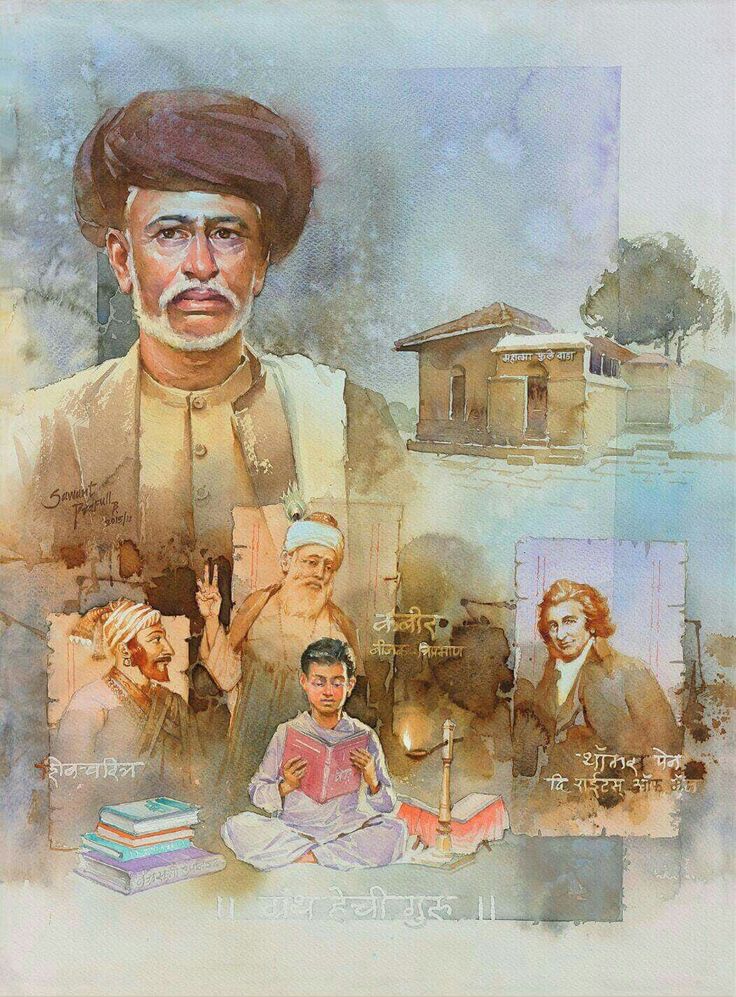
The Satyashodhak Samaj didn’t just preach—it acted. Its programs were bold, practical, and deeply transformative.
📚 1. Education for All
Phule believed that education was the first step to liberation. The Samaj:
- Opened schools for girls, Dalits, and Muslims
- Created night classes for laborers and farmers
- Trained female teachers, including widows and rape survivors
- Distributed pamphlets and books in Marathi
These schools were safe spaces for the oppressed, where knowledge replaced fear.
💍 2. Satyashodhak Marriages
The Samaj introduced inter-caste, priest-free marriages:
- No Brahmin rituals
- No dowry
- No caste restrictions
Couples took simple vows of equality and mutual respect. These marriages were acts of rebellion, challenging centuries of caste control.
🏠 3. Shelters and Social Welfare
The Samaj built:
- Shelters for widows and pregnant rape victims
- Adoption centers for abandoned children
- Support networks for victims of caste violence
Phule and Savitribai even adopted a child from a Brahmin widow, raising him as their own. This was not charity—it was justice.
📢 4. Public Debates and Awareness
The Samaj held:
- Lectures on caste, religion, and ethics
- Debates on scriptures and rituals
- Campaigns against child marriage, sati, and untouchability
These events were intellectual battlegrounds, where truth was spoken boldly, and ignorance was challenged fiercely.
⚔️ Section 7: Resistance and Backlash – Orthodox Opposition and Survival
The rise of the Satyashodhak Samaj, led by Jyotirao Phule, was met with fierce resistance from the Brahminical elite and conservative society. The Samaj didn’t just challenge rituals—it challenged power structures.
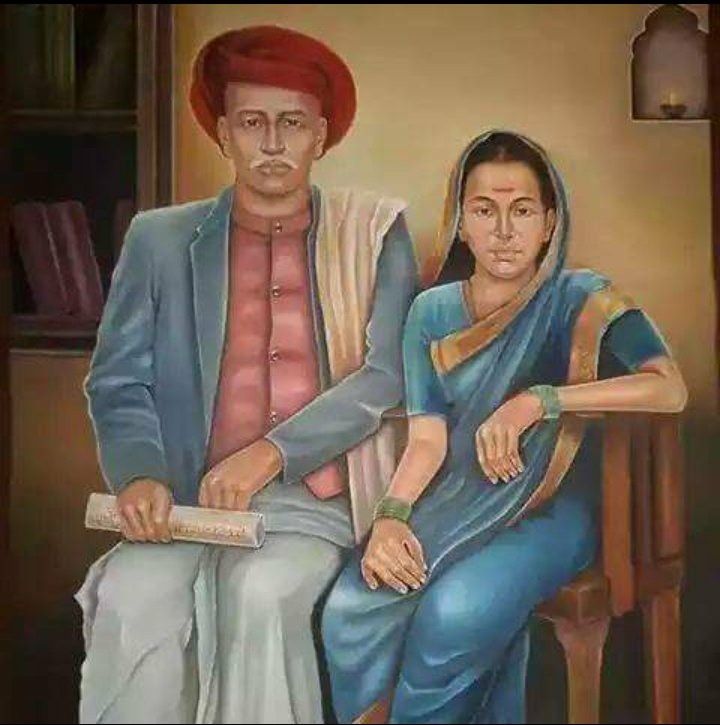
🔥 Social Ostracism
Phule was:
- Disowned by his father, Govindrao Phule, for defying caste norms
- Excluded from community events
- Mocked in public forums and newspapers
Savitribai Phule faced:
- Verbal abuse and physical attacks while walking to school
- Threats from upper-caste men who saw her as a danger to tradition
Yet they persisted. Their courage became a symbol of resistance.
📜 Legal and Religious Attacks
- Satyashodhak marriages were declared invalid by Brahmin priests
- Pamphlets were banned in some regions
- Religious leaders denounced the Samaj as heretical
Phule responded not with anger, but with reason and writing. He published rebuttals, held debates, and continued his work.
🧱 Institutional Barriers
- Schools were denied funding
- Dalit students were harassed
- Women were discouraged from attending classes
The Samaj built its own institutions, proving that truth doesn’t need permission—it needs conviction.
👑 Section 8: Revival and Expansion – Shahu Maharaj and the Samaj’s Second Wave
In the early 20th century, the Satyashodhak Samaj found a powerful ally: Shahu Maharaj of Kolhapur, a progressive ruler who believed in Bahujan empowerment.
🏰 Royal Patronage
Shahu Maharaj:
- Declared himself a Satyashodhak follower
- Funded schools for Dalits and backward castes
- Promoted inter-caste dining and marriage
- Appointed non-Brahmins to key administrative posts
He used his royal power to institutionalize Phule’s vision.
📚 Educational Expansion
Under Shahu’s leadership:
- Hostels for Dalit students were built
- Scholarships were offered to Bahujan youth
- Teacher training programs were launched
Education became a weapon of equality, just as Phule had envisioned.
🧑⚖️ Political Reforms
Shahu Maharaj introduced:
- Reservations in government jobs
- Legal protections for inter-caste couples
- Public celebrations of Phule’s birth anniversary
He proved that social justice could be state policy, not just street protest.
🧠 Section 9: Influence on Ambedkar and Bahujan Movements
Dr. B.R. Ambedkar, the architect of the Indian Constitution, called Jyotirao Phule his intellectual ancestor. The Satyashodhak Samaj deeply influenced Ambedkar’s philosophy and activism.
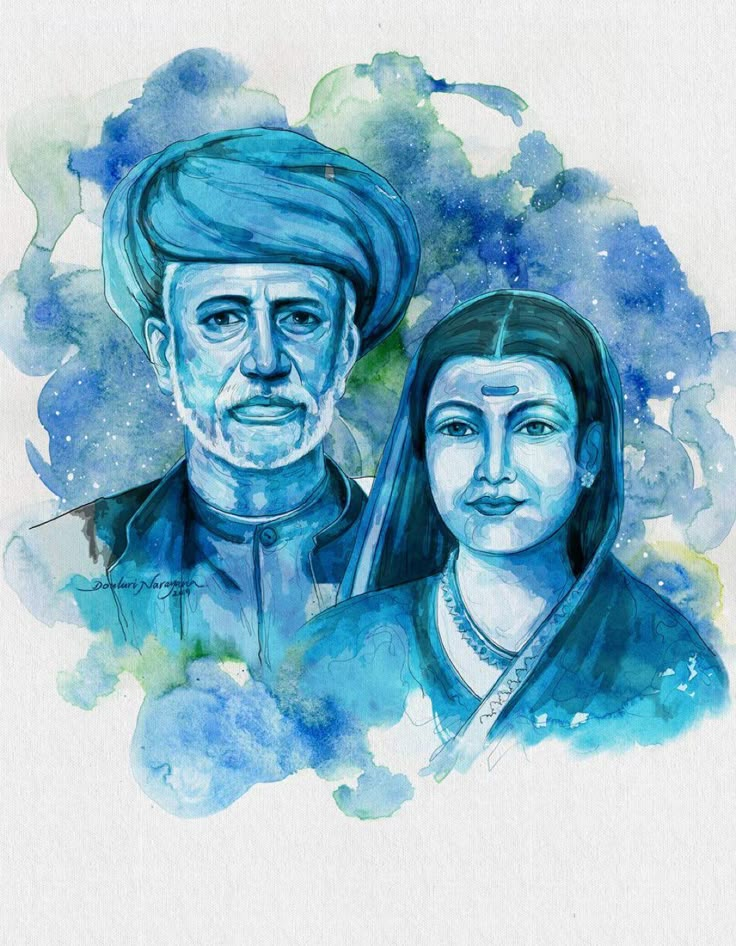
📖 Ideological Continuity
Ambedkar adopted Phule’s:
- Critique of Brahminical Hinduism
- Emphasis on education and self-respect
- Vision of Bahujan unity
He expanded it by:
- Drafting constitutional safeguards for Dalits
- Leading mass conversions to Buddhism
- Founding political parties for the oppressed
Phule laid the moral foundation; Ambedkar built the legal structure.
🐾 Dalit Panthers and BSP
In the 1970s, the Dalit Panthers emerged in Maharashtra, quoting Phule and Ambedkar. They:
- Used literature and protest to challenge caste violence
- Called for Bahujan cultural renaissance
Later, the Bahujan Samaj Party (BSP), founded by Kanshi Ram, adopted Phule’s vision of:
- Political power for the majority
- Representation for the oppressed
- Unity across caste and religion
Jyotirao Phule’s ideas became slogans, manifestos, and movements.
🌍 Section 10: Philosophical Legacy and Modern Relevance
The Satyashodhak Samaj, though founded in 1873, remains deeply relevant today. Its principles echo in every fight for justice, every call for equality, and every voice that challenges oppression.
🧭 Moral Philosophy
Phule’s teachings remind us:
- Truth is not ritual—it’s reason
- Religion must serve humanity
- Caste is not fate—it’s fiction
His philosophy is rooted in humanism, rationalism, and compassion.
🏫 Educational Legacy
Every school that teaches a Dalit child, every girl who enters a classroom, every widow who finds shelter—carries the spirit of the Samaj.
Phule proved that education is not just learning—it’s liberation.
🗳️ Political and Cultural Impact
From inter-caste marriages to affirmative action, from Bahujan literature to Dalit cinema, the Samaj’s legacy is everywhere.
It’s in the Constitution. It’s in the classroom. It’s in the streets.
🔚 Final Reflection
Jyotirao Phule’s Satyashodhak Samaj was not just a movement—it was a mirror to India’s soul. It asked hard questions, gave bold answers, and built a new moral order.
His message remains timeless:
“Let us seek truth, not tradition. Let us build justice, not ritual. Let us awaken India, one mind at a time.”
📖 Jyotirao Phule’s Trutiya Ratna (1855): A Literary Manifesto for Education and Social Reform
Jyotirao Phule, the pioneering social reformer of 19th-century India, was not only a fearless activist but also a visionary writer. Among his earliest and most influential literary contributions is the play Trutiya Ratna, written in 1855. Often translated as The Third Gem or The Third Eye, this work is considered the first modern Indian social drama, and it laid the foundation for Phule’s lifelong campaign for education, rationalism, and caste annihilation.
🎭 Historical Significance of Trutiya Ratna
At a time when Marathi theatre was dominated by religious epics and Brahminical narratives, Jyotirao Phule broke new ground by writing a play that directly addressed social injustice. Unlike Vishnudev Bhave’s Sitaswayamvar, which glorified mythological ideals, Trutiya Ratna was a dialogue-driven critique of caste, ignorance, and religious orthodoxy.
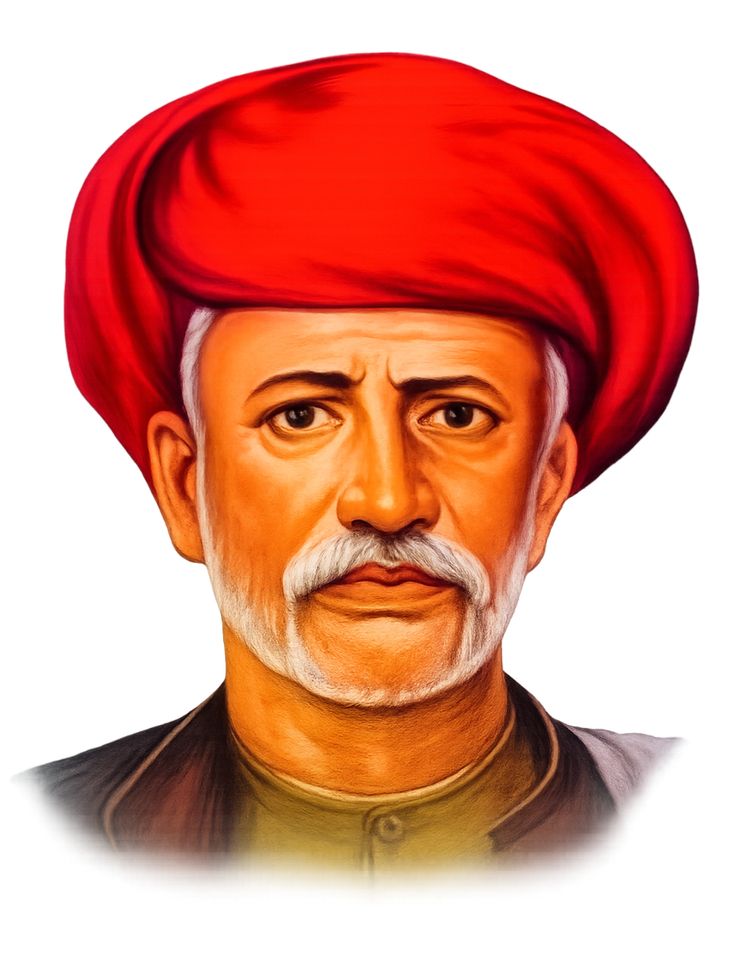
Phule’s decision to use drama as a medium was strategic. Theatre was accessible, engaging, and capable of reaching illiterate audiences. Through Trutiya Ratna, he introduced Bahujan audiences to ideas of equality, education, and self-respect, challenging the dominance of Brahminical storytelling.
📚 Plot and Structure: A Dialogue of Awakening
Trutiya Ratna is structured as a dialogue between three characters:
- A Shudra youth, representing the oppressed masses
- A Brahmin priest, symbolizing religious authority
- A rational teacher, embodying Phule’s ideals of truth and education
The play unfolds as the Shudra youth begins to question the rituals imposed on him. The Brahmin priest insists on blind obedience, citing scriptures and tradition. The teacher intervenes, exposing the economic and psychological exploitation behind these rituals.
Through this dialogue, Jyotirao Phule illustrates:
- The falsehood of caste-based rituals
- The importance of education as the “third gem”
- The need for rational thinking and moral courage
The “third gem” is not a literal jewel—it is education, the key to liberation. Phule’s metaphor is powerful: truth and knowledge are more valuable than gold or religious status.
🧠 Philosophical Themes
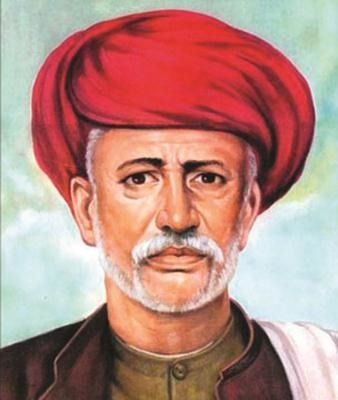
🔸 Education as Liberation
Phule believed that education was the only path to freedom for Shudras and women. In Trutiya Ratna, he shows how ignorance keeps people enslaved, and how learning can awaken self-respect.
“The Brahmin’s ritual binds you. The teacher’s truth frees you.”
This theme would later become central to Phule’s activism, especially in his work with Savitribai Phule, India’s first female teacher.
🔸 Critique of Brahminical Orthodoxy
The play exposes how Brahmin priests use fear and mythology to maintain control. Phule doesn’t attack individuals—he attacks the system that perpetuates inequality.
He argues that:
- Rituals are economically exploitative
- Scriptures are politically motivated
- Caste is a tool of domination, not divinity
This critique laid the groundwork for his later works like Gulamgiri and Shetkaryacha Asud.
🔸 Rationalism and Moral Courage
The teacher in Trutiya Ratna represents Phule’s ideal citizen—someone who:
- Questions authority
- Seeks truth
- Acts with compassion
Phule believed that reason must replace superstition, and that moral courage must replace blind faith.
📖 Literary Style and Innovation
Phule’s writing in Trutiya Ratna is:
- Simple and direct, using colloquial Marathi
- Dialogic, encouraging debate and reflection
- Symbolic, with metaphors like the “third gem” and “third eye”
He avoids Sanskritized language, making the play accessible to Bahujan readers. This was a deliberate rejection of Brahminical literary norms.
🌍 Social Impact and Legacy
Though Trutiya Ratna was not widely staged during Phule’s lifetime, its ideas spread through:
- Public readings
- Pamphlet distribution
- School curricula in Satyashodhak Samaj institutions
It inspired:
- Dalit theatre movements
- Bahujan literature
- Ambedkarite pedagogy
Modern scholars like Sharmila Rege have interpreted Trutiya Ratna as a feminist and anti-caste manifesto, linking it to Phule-Ambedkarite educational practices.
🧭 Relevance Today
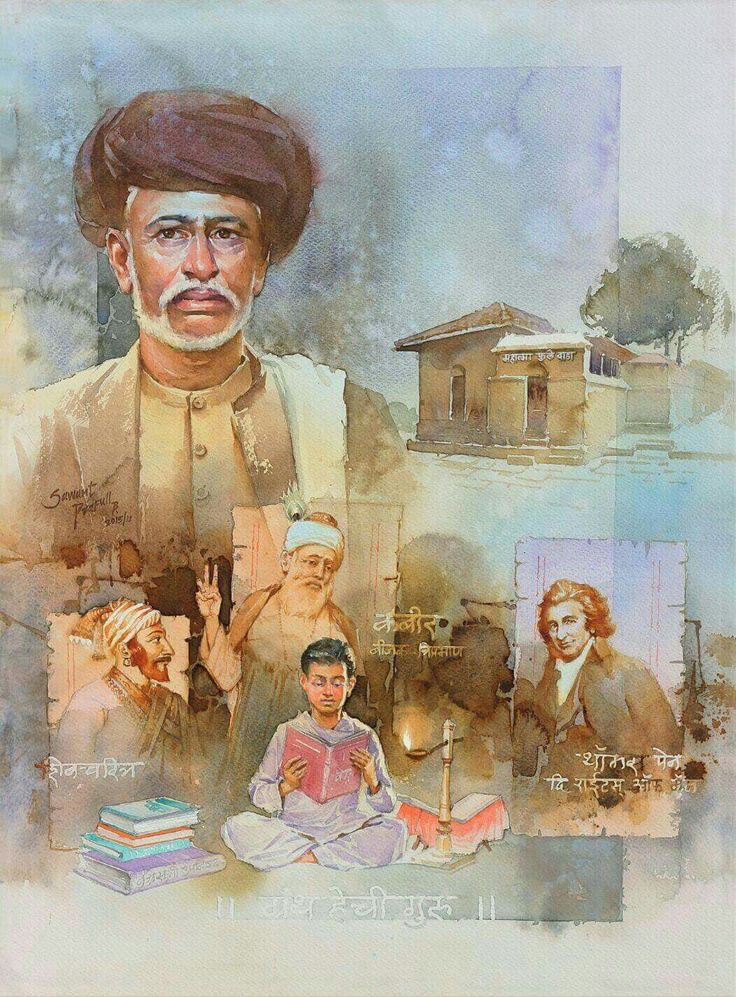
In today’s India, Trutiya Ratna remains a timeless call to awaken:
- In every classroom that teaches critical thinking
- In every student who questions caste
- In every teacher who empowers the marginalized
Jyotirao Phule’s message is clear:
“Education is the third gem. Wear it with pride, and walk into the light.”
🔚 Conclusion: Trutiya Ratna as a Literary Revolution
Trutiya Ratna is more than a play—it is a blueprint for social transformation. Through its characters, metaphors, and dialogues, Jyotirao Phule gave voice to the voiceless and vision to the oppressed.
He didn’t just write literature—he wrote liberation.
📖 Brahmananche Kasab (1869): Jyotirao Phule’s Satirical Strike Against Brahminical Rituals.
In 1869, Jyotirao Phule, the fearless social reformer and founder of the Satyashodhak Samaj, published one of his most biting and brilliant works—Brahmananche Kasab, which translates to The Craft of the Brahmins. This short yet powerful pamphlet is a satirical critique of Brahminical rituals, exposing how religious customs were used to exploit the masses, especially Shudras and women.
Phule’s tone in this work is sharp, witty, and unapologetically rebellious. He doesn’t just question the rituals—he ridicules their absurdity, revealing the economic motives and psychological manipulation behind them.
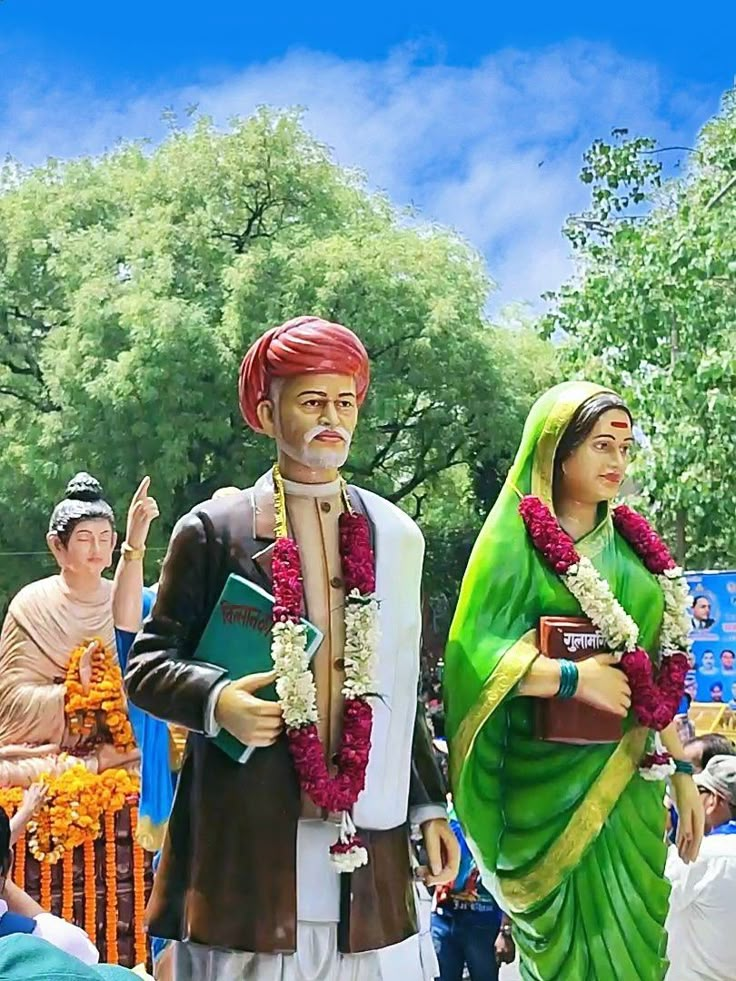
🧠 Context and Purpose
Jyotirao Phule had already begun his crusade against caste oppression through education and activism. But he realized that rituals were the invisible chains that kept the Bahujan masses enslaved. These rituals:
- Demanded money for meaningless ceremonies
- Enforced caste purity and exclusion
- Justified Brahmin dominance through mythology
Phule wrote Brahmananche Kasab to expose the business model of priesthood, showing how Brahmins turned religion into a profitable enterprise.
📜 Structure and Style
The text is written in Marathi, using simple, colloquial language. It’s structured as a satirical essay, filled with:
- Mockery of rituals like thread ceremonies, shraddha, and yajnas
- Irony and sarcasm to highlight contradictions
- Examples from everyday life to connect with readers
Phule’s writing is accessible and provocative, designed to awaken the oppressed, not entertain the elite.
🔥 Key Themes and Arguments
🛕 1. Rituals as Economic Exploitation
Phule argues that Brahminical rituals are:
- Designed to extract money from poor families
- Filled with meaningless chants and gestures
- Used to maintain priestly control over life events
He writes:
“The Brahmin does not worship God. He worships gold.”
This line captures the essence of the critique—religion as commerce, not compassion.
🧹 2. Caste as a Tool of Control
Phule shows how rituals reinforce caste:
- Only Brahmins can perform ceremonies
- Shudras are excluded or humiliated
- Women are silenced and shamed
He calls this system a kasab—a craft, a cunning trade, not a divine order.
📚 3. Need for Rationalism
Phule urges readers to:
- Question rituals
- Reject priestly authority
- Embrace education and morality
He proposes a new moral religion, based on truth, equality, and reason—not superstition.
🧩 Literary Devices and Satirical Genius
Phule uses:
- Hyperbole to exaggerate ritual absurdity
- Dialogue and parody to mimic priestly behavior
- Metaphors like “ritual as rope” and “priest as puppeteer”
His satire is not just humorous—it’s revolutionary, aimed at breaking mental slavery.
📖 Impact and Legacy
Though Brahmananche Kasab was a short pamphlet, its impact was massive:
- It became a popular text in Satyashodhak Samaj meetings
- Inspired anti-caste writers and thinkers
- Was quoted in Dalit literature and Bahujan manifestos
Modern scholars see it as a precursor to Ambedkar’s Annihilation of Caste, and a milestone in Indian rationalist writing.
🧭 Relevance Today
Even today, Phule’s critique holds power:
- Rituals continue to dominate weddings, funerals, and festivals
- Priestly control persists in many communities
- Superstition still overshadows science
Brahmananche Kasab reminds us that liberation begins with laughter—and questioning.
🔚 Conclusion: Satire as Social Weapon
With Brahmananche Kasab, Jyotirao Phule proved that satire can be a weapon of truth. He didn’t just mock rituals—he dismantled the ideology behind them. His message is clear:
“Let us not fear the priest’s chant. Let us hear the voice of reason.”
This work remains a masterpiece of resistance literature, echoing in every classroom, protest, and reform that challenges caste and ritualism.
📖 Shetkaryacha Asud (1883): Jyotirao Phule’s Whipcord of Truth
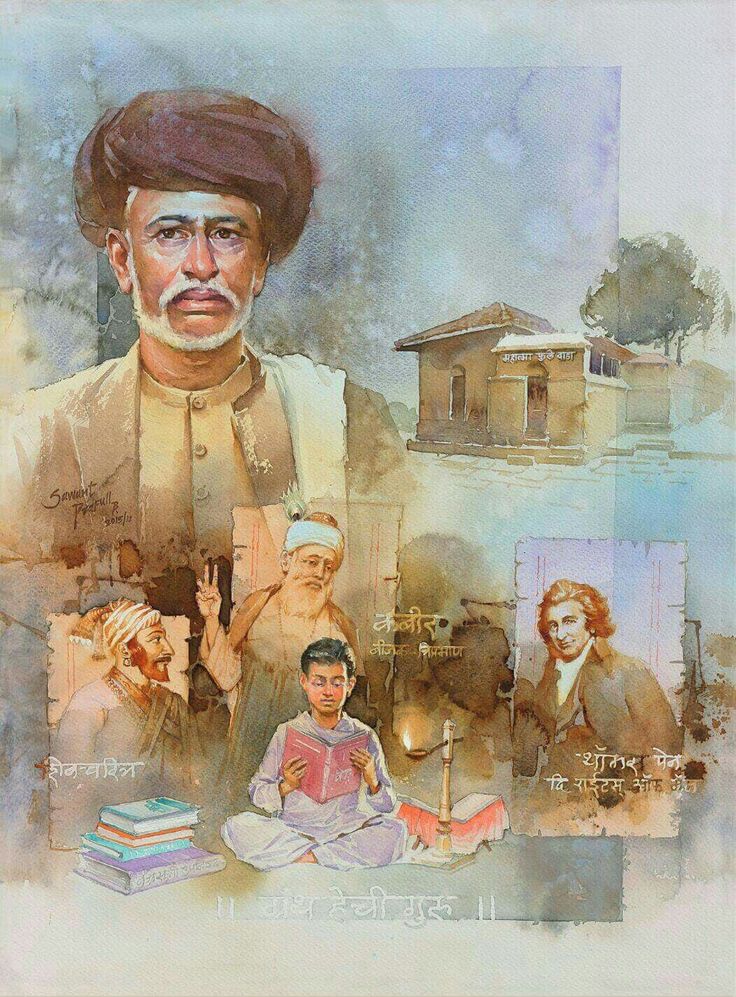
✍️ Section 1: Introduction – A Whipcord for the Oppressed
In 1883, Jyotirao Phule, the fearless social reformer and founder of the Satyashodhak Samaj, published one of his most radical and emotionally charged works—Shetkaryacha Asud, or The Cultivator’s Whipcord. This book was not written for the elite, nor for the educated classes—it was written for the Bahujan farmer, the Shudra tiller of the land, whose sweat fed the nation but whose life was crushed under caste and colonial exploitation.
Phule’s voice in this book is not academic—it is angry, urgent, and deeply empathetic. He writes as a witness to suffering, as a son of the soil, and as a revolutionary who believes that truth must be spoken, even if it stings like a whipcord.
The title itself is symbolic. A whipcord is a tool used to drive animals—but here, Phule uses it as a metaphor for the pain endured by farmers, and also as a weapon of awakening. His message is clear:
“Let the cultivator rise. Let him read, reason, and rebel.”
🌾 Section 2: Historical Context – Farmers in Colonial India
To understand Shetkaryacha Asud, we must understand the agrarian crisis of 19th-century India. Under British rule, farmers faced:
- High land taxes, even during droughts and famines
- Debt traps created by moneylenders and landlords
- Crop failures due to poor irrigation and lack of support
- Social exclusion based on caste, which denied them education and justice
Phule saw that the British administration, while claiming to be modern, had preserved Brahminical dominance in education, bureaucracy, and religion. The result was a double exploitation—economic by the colonizers, and social by the caste elite.
Phule’s critique was not just of the British—it was of the entire system that allowed Shudra farmers to suffer silently while Brahmins and landlords lived in comfort.
🔥 Section 3: Farmer Exploitation – The Heart of the Whipcord
In Shetkaryacha Asud, Phule paints a vivid picture of the farmer’s life:
- He wakes before sunrise, works till sunset, and still cannot feed his children
- He is forced to pay taxes even when his crops fail
- He is cheated by moneylenders, who trap him in endless debt
- He is denied education, so he cannot understand contracts or laws
- He is excluded from temples, yet expected to fund religious ceremonies
Phule writes:
“The cultivator’s sweat waters the land, but his children starve.”
This line captures the moral outrage that drives the book. Phule sees the farmer not as a victim, but as a potential revolutionary, waiting to be awakened.
🕉️ Section 4: Brahminical Injustice – Rituals and Caste as Tools of Oppression
Phule’s critique of Brahminical dominance is sharp and fearless. He argues that:
- Brahmins monopolize education, keeping Shudras ignorant
- They perform rituals that have no meaning, but demand payment
- They use mythology to justify caste hierarchy
- They contribute nothing to agriculture or labor, yet claim superiority
Phule calls the Brahmin elite parasites, feeding off the labor of the masses. He exposes how religion has been turned into a business, and how rituals are used to maintain control.
He writes:
“The Brahmin does not worship God. He worships gold.”
This section of the book is not just a critique—it is a call to reject blind faith, and to embrace rationalism and morality.
📚 Section 5: Education as Liberation – The True Whipcord
For jyotirao Phule, the real whipcord is not violence—it is education. He believes that:
- Ignorance is the root of slavery
- Education is the path to self-respect and freedom
- Schools must be opened for Shudras, Ati-Shudras, and women
- Curriculum must include agriculture, science, and ethics—not Sanskrit and rituals
Phule criticizes the British for funding Brahmin schools, while ignoring the needs of the majority. He demands free and compulsory education for the Bahujan masses.
He writes:
“Without education, wisdom was lost; without wisdom, morals were lost; without morals, development was lost; without development, wealth was lost; without wealth, the Shudras were ruined.”
This quote, from the introduction of the book, summarizes Phule’s entire philosophy: education is the whipcord that can strike down oppression.
🏛️ Section 6: Critique of British Governance – Reform or Complicity?
While Shetkaryacha Asud is often remembered for its attack on caste injustice, Jyotirao Phule also delivers a scathing critique of the British colonial administration. He accuses the British of:
- Ignoring rural distress, especially during famines
- Failing to modernize agriculture, leaving farmers at the mercy of nature
- Collecting taxes without mercy, even when crops failed
Jyotirao Phule believed that the British had a moral responsibility to uplift the masses. Instead, they had outsourced governance to the Brahmin elite, who used their power to perpetuate caste-based exploitation.
He writes:
“If the British truly wish to civilize India, let them begin with the cultivator—not the priest.”
This section is a direct appeal to colonial rulers, urging them to act as reformers, not just administrators.
🧠 Section 7: Reform Proposals – A Blueprint for Bahujan Empowerment
Phule doesn’t just critique—he offers concrete solutions. In Shetkaryacha Asud, he lays out a vision for reform that includes:
📚 Education
- Free and compulsory education for Shudras, Ati-Shudras, and women
- Practical curriculum focused on agriculture, science, and ethics
- Removal of Sanskrit and ritual-based learning
Phule believed that education was the whipcord that could strike down ignorance and caste.
🧑🌾 Agricultural Reform
- Irrigation infrastructure to prevent famine
- Fair taxation policies based on crop yield
- Training in modern farming techniques
He wanted farmers to be empowered with knowledge, not enslaved by tradition.
🏛️ Administrative Inclusion
- Representation of Bahujans in government jobs
- End to Brahmin monopoly in bureaucracy
- Accountability for officials who ignored rural suffering
Phule’s proposals were radical for their time, but they laid the foundation for future social justice policies.
📖 Section 8: Literary Style – A Voice for the Voiceless
Phule’s writing in Shetkaryacha Asud is not academic—it’s emotional, direct, and revolutionary. His style includes:
🔸 Language
- Written in Marathi, accessible to the common farmer
- Avoids Sanskritized vocabulary, rejecting Brahminical literary norms
- Uses colloquial expressions, metaphors, and proverbs
🔸 Tone
- Fiery and confrontational, especially toward Brahmins and colonial officials
- Empathetic and encouraging when addressing farmers
- Satirical and ironic, exposing the absurdity of rituals and caste customs
🔸 Structure
- Organized as a petition and manifesto, not a traditional essay
- Combines personal anecdotes, statistical data, and moral arguments
Phule’s literary style made the book a weapon of awakening, not just a piece of writing.
🐾 Section 9: Impact on Future Movements – From Phule to Ambedkar
Shetkaryacha Asud became a foundational text for anti-caste and peasant movements. Its influence can be seen in:
🔹 Ambedkarite Thought
Dr. B.R. Ambedkar adopted Phule’s:
- Emphasis on education and rationalism
- Critique of Brahminical Hinduism
- Vision of Bahujan unity
Ambedkar expanded Phule’s ideas into constitutional safeguards, political representation, and mass conversions to Buddhism.
🔹 Dalit and Bahujan Literature
Writers like Namdeo Dhasal, Baburao Bagul, and Shantabai Kamble echoed Phule’s themes of:
- Farmer suffering
- Caste violence
- Resistance through writing
🔹 Political Movements
- Dalit Panthers quoted Shetkaryacha Asud in their manifestos
- Bahujan Samaj Party (BSP) adopted Phule’s vision of majority rule
- Peasant unions used the book to mobilize rural workers
Phule’s whipcord became a symbol of resistance, passed from one generation to the next.
🌍 Section 10: Modern Relevance – The Whipcord Still Stings
Even in 2025, Shetkaryacha Asud remains deeply relevant. India’s farmers still face:
- Debt and suicide crises
- Landlessness and displacement
- Caste-based exclusion from education and justice
Phule’s critique of rituals, caste, and colonial complicity still applies to:
- Modern bureaucracy, which often ignores rural voices
- Cultural institutions, where Brahminical dominance persists
- Political discourse, which rarely centers Bahujan suffering
His message is timeless:
“Let the cultivator rise. Let him read, reason, and rebel.”
Phule’s whipcord is not just a metaphor—it’s a call to action.
👨👩🏫 The Revolutionary Partnership of Jyotirao Phule and Savitribai Phule
🪢 Section 1: A Marriage of Minds and Mission
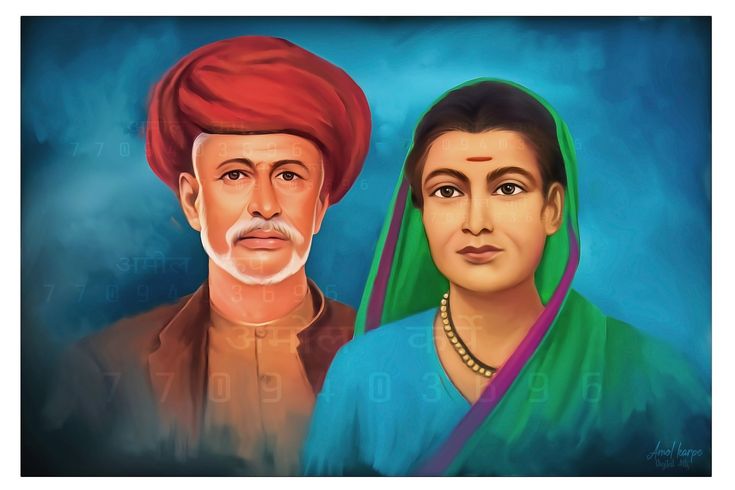
In 1840, when Jyotirao Phule married Savitribai Phule, it was a traditional union arranged by their families. But what emerged from that relationship was anything but conventional. Jyotirao, born into the Mali caste, had already begun questioning the caste system and Brahminical rituals. Savitribai, though uneducated at the time of marriage, was curious, bold, and eager to learn.
Jyotirao didn’t see his wife as someone to be confined to domestic duties. He saw her as a partner in his mission. He taught her to read and write, and she became India’s first female teacher. Their marriage became a model of gender equality, where both partners were co-reformers, colleagues, and equals.
This was radical in 19th-century India, where women were expected to remain silent, submissive, and invisible. Jyotirao broke that mold, and Savitribai stepped into the light with courage and conviction.
“If women are not educated, half the society remains blind,” Jyotirao once said. Savitribai became the torchbearer of that vision.
Their marriage was not just personal—it was political. It was a rebellion against patriarchy, caste, and ignorance.
🏫 Section 2: Opening Schools for Girls and the Marginalized
In 1848, the Phules opened their first school for girls at Bhide Wada in Pune. This was a revolutionary act. At the time, educating girls—especially from Shudra and Dalit communities—was considered sinful by orthodox Hindus.
Together, Savitribai Phule and Jyotirao Phule:
- Faced verbal abuse and physical attacks from upper-caste locals
- Were pelted with stones and cow dung as Savitribai walked to school
- Continued teaching despite threats, humiliation, and social boycott
They went on to open 18 schools, including:
- Schools for Dalit children
- Night schools for laborers
- Institutions for Muslim girls
Savitribai’s role was central. She not only taught but also trained other women to become teachers. She wrote poems and essays encouraging girls to study, and she became a symbol of resistance against patriarchy and caste.
Their schools were not just buildings—they were temples of truth, where knowledge replaced superstition, and dignity replaced discrimination.
🏠 Section 3: Shelters for Widows and Pregnant Rape Victims
In a society where widows were treated as cursed and rape victims were shamed into silence, the Phules created safe spaces. They opened the Balhatya Pratibandhak Griha—a shelter for:
- Widows who were ostracized
- Pregnant rape victims abandoned by society
- Young girls forced into child marriage
Savitribai personally cared for these women. She provided food, shelter, and emotional support. Jyotirao handled the logistics and legal challenges. Together, they created a prototype of modern social work, decades before the term existed.
Their shelter was not just a building—it was a sanctuary of dignity. It was a place where women could heal, learn, and reclaim their lives.
This initiative was deeply rooted in their belief that every human deserves respect, regardless of caste, gender, or circumstance.
👶 Section 4: Adoption of a Brahmin Widow’s Child
One of the most powerful acts of defiance came when the Phules adopted a child born to a Brahmin widow. The woman had been raped and abandoned. No one would accept her child—not even her own family.
Jyotirao and Savitribai:
- Took the child in
- Raised him as their own
- Gave him education, love, and identity
This act shattered caste boundaries. It was a direct challenge to Brahminical purity laws, which forbade inter-caste adoption and contact. The Phules didn’t just preach equality—they lived it.
Their home became a living manifesto, where caste was irrelevant, and compassion was supreme.
This adoption was not just an act of kindness—it was a political statement, a declaration that humanity must triumph over hierarchy.
🔥 Section 5: Fighting Child Marriage, Sati, and Female Infanticide
The Phules were relentless in their fight against:
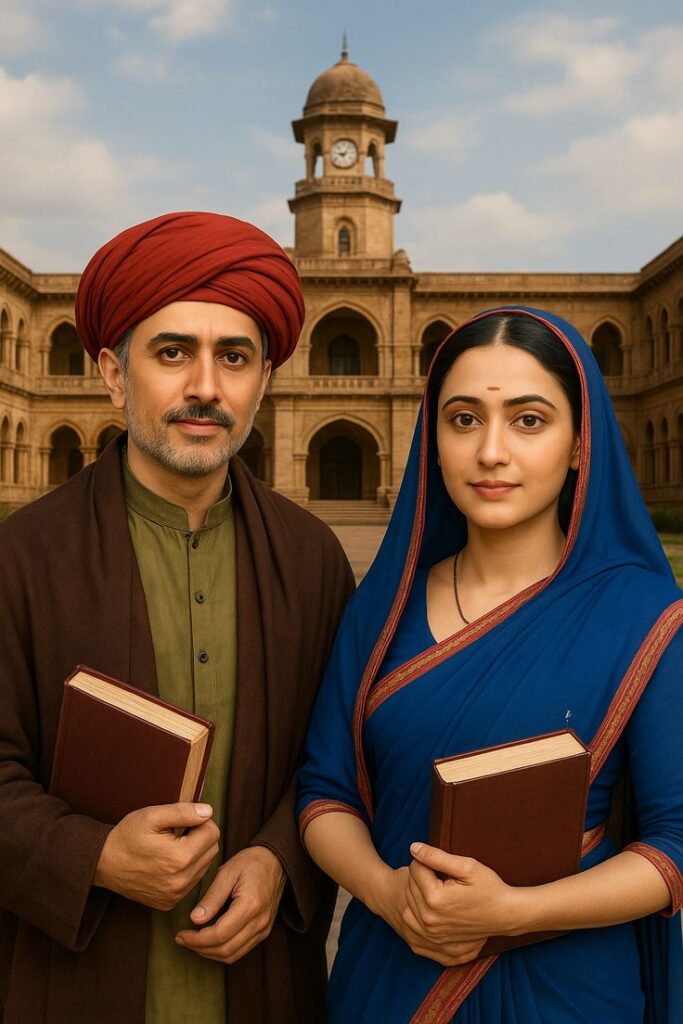
- Child marriage, which robbed girls of childhood and education
- Sati, the practice of burning widows alive
- Female infanticide, driven by caste and dowry pressures
Savitribai wrote poems condemning these practices. Jyotirao lobbied for legal reforms. They organized public lectures, distributed pamphlets, and created awareness among the Bahujan masses.
Their activism was rooted in humanism and rationalism. They believed that every life mattered, regardless of caste, gender, or birth.
They didn’t just oppose these practices—they offered alternatives:
- Education instead of marriage
- Shelters instead of death
- Adoption instead of abandonment
Their work laid the foundation for modern feminist and anti-caste movements in India.
🧠 Section 6: Intellectual Leadership – Jyotirao Phule as a Thinker and Strategist
While many remember Jyotirao Phule as a social reformer, his intellectual contributions were equally revolutionary. He wasn’t just reacting to injustice—he was reframing the entire moral and historical narrative of India. Through his writings, speeches, and institutions, Jyotirao Phule challenged the very foundations of caste, patriarchy, and religious orthodoxy.
He authored powerful texts like:
- Gulamgiri (Slavery), where he compared caste oppression to American slavery
- Shetkaryacha Asud (The Cultivator’s Whipcord), a critique of farmer exploitation
- Brahmananche Kasab, a satire on priestly rituals and caste manipulation
Each of these works was a strategic strike against Brahminical dominance. Jyotirao Phule used history, logic, and moral reasoning to awaken the Bahujan masses. He didn’t just expose injustice—he offered a new vision of society based on truth, equality, and rationalism.
His intellectual legacy laid the groundwork for future thinkers like Dr. B.R. Ambedkar, who called Jyotirao Phule his “intellectual ancestor.”
🏛️ Section 7: Founding the Satyashodhak Samaj – A Movement of Truth
In 1873, Jyotirao Phule founded the Satyashodhak Samaj—the Society of Truth Seekers. This wasn’t just an organization; it was a moral revolution. The Samaj rejected the authority of Brahmin priests, caste rituals, and religious dogma. Instead, it promoted:
- Equality over hierarchy
- Reason over superstition
Jyotirao Phule envisioned the Samaj as a platform for Bahujan unity. It welcomed Shudras, Ati-Shudras, Muslims, Christians, and women—anyone who believed in justice and dignity. The Samaj conducted:
- Inter-caste marriages without Brahmin priests
- Public debates on caste and religion
- Educational programs for the oppressed
Under the leadership of Jyotirao Phule, the Satyashodhak Samaj became a counter-institution to Brahminical power. It gave the marginalized not just a voice—but a vision.
📚 Section 8: Legacy in Literature and Social Reform
The writings of Jyotirao Phule were not just critiques—they were blueprints for liberation. His books were written in Marathi, the language of the people, not Sanskrit, the language of the elite. This was a deliberate choice. He wanted his message to reach the Bahujan masses, not remain locked in ivory towers.
In Gulamgiri, Jyotirao Phule dismantled the myth of divine caste order. He argued that Brahmins had fabricated religious texts to enslave Shudras. In Shetkaryacha Asud, he exposed how both British rulers and Brahmin landlords exploited farmers. In every book, he combined historical analysis with moral clarity.
His literary style was:
- Bold and confrontational
- Rich in metaphor and satire
- Grounded in lived experience
Jyotirao Phule’s literature became a weapon of resistance, inspiring generations of Dalit, Bahujan, and feminist writers. His legacy lives on in every voice that dares to question caste, patriarchy, and injustice.
🌍 Section 9: Influence on Future Movements and Thinkers
The impact of Jyotirao Phule didn’t end with his lifetime. His ideas became the foundation of modern anti-caste and Bahujan movements. Leaders like Dr. B.R. Ambedkar, Periyar, and Kanshi Ram drew heavily from Phule’s vision.
Ambedkar, in particular, saw Jyotirao Phule as a pioneer of social justice. He adopted Phule’s emphasis on:
- Education as liberation
- Bahujan unity against Brahminical dominance
- Rationalism as a moral compass
The Dalit Panthers of the 1970s quoted Jyotirao Phule in their manifestos. The Bahujan Samaj Party carried forward his dream of political representation for the majority. Even today, Phule’s ideas echo in:
- Reservation policies
- Inter-caste marriage campaigns
- Grassroots education initiatives
Jyotirao Phule was not just a reformer—he was a movement in motion, still shaping India’s conscience.
🔚 Section 10: Modern Relevance – Why Jyotirao Phule Still Matters
In 2025, the teachings of Jyotirao Phule are more relevant than ever. India still grapples with:
- Caste-based violence
- Gender inequality
- Farmer distress
- Educational exclusion
Phule’s vision offers a roadmap. He believed that true progress begins with the most oppressed. His call to “educate, organize, and agitate” remains a rallying cry for activists, educators, and reformers.
Jyotirao Phule’s legacy lives on in:
- Every girl who enters a classroom
- Every Dalit student who earns a degree
- Every inter-caste couple who marries for love
- Every Bahujan voice that demands justice
He taught us that truth is not inherited—it is discovered. And that discovery begins with courage.
“Let us awaken the oppressed, wherever they are. Let us build a world where truth is the highest ritual.” — Jyotirao Phule
🕊️ Death and Legacy of Jyotirao Phule: A Life That Lit the Path for Millions
🪶 Section 1: The Final Chapter – Jyotirao Phule’s Last Days
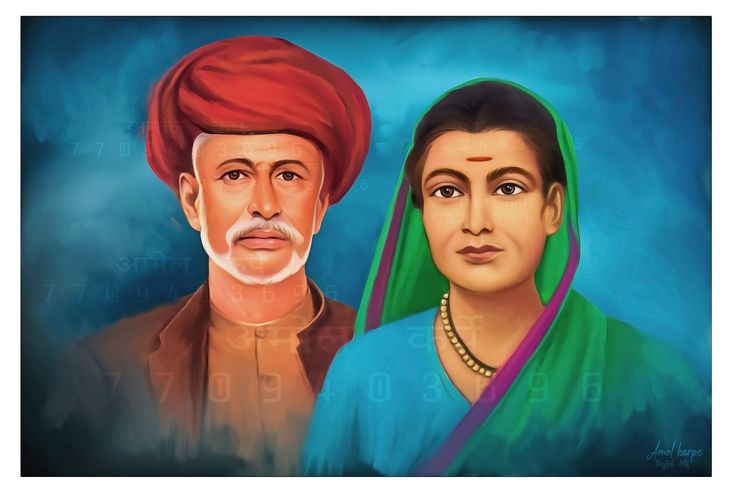
On 28 November 1890, in Pune, Jyotirao Phule took his final breath. He was 63 years old. His passing marked the end of a life that had shaken the foundations of caste, patriarchy, and religious orthodoxy in India. But even in death, Jyotirao Phule’s presence remained powerful.
In his final years, Jyotirao Phule continued to write, teach, and organize. Despite declining health, he remained committed to the Satyashodhak Samaj, the movement he founded to awaken the Bahujan masses. His home in Pune became a hub of intellectual debate, social planning, and moral courage.
Jyotirao Phule’s death was mourned not just by his followers, but by every person who had tasted dignity because of his work. His funeral was attended by people from all castes and religions—a rare sight in 19th-century India. It was a testament to the inclusive revolution he had built.
🌾 Section 2: The Seeds He Planted – Anti-Caste Activism
Jyotirao Phule’s legacy begins with his relentless fight against caste oppression. He was the first Indian thinker to publicly declare that:
- Caste is not divine—it is political
- Brahminical rituals are tools of control
- Shudras and Ati-Shudras are the true builders of India
Through books like Gulamgiri and Brahmananche Kasab, Jyotirao Phule exposed how mythology was weaponized to enslave the majority. He didn’t just critique—he organized. The Satyashodhak Samaj became a platform for inter-caste unity, rational debate, and social reform.
Jyotirao Phule’s activism laid the foundation for future anti-caste movements. His ideas were adopted and expanded by Dr. B.R. Ambedkar, who called him his intellectual ancestor. Today, every Dalit protest, every Bahujan manifesto, and every voice that challenges caste carries the spirit of Jyotirao Phule.
📚 Section 3: Revolution Through Education – Reforming the Classroom
Jyotirao Phule believed that education was the whipcord that could strike down oppression. He opened India’s first school for girls in 1848, trained female teachers, and created night schools for laborers. He didn’t just teach—he transformed.
His wife, Savitribai Phule, became India’s first female teacher under his guidance. Together, they built a network of schools that welcomed:
- Girls from all castes
- Dalit children
- Muslim students
- Widows and rape survivors
Jyotirao Phule’s curriculum rejected Sanskrit and rituals. Instead, it focused on:
- Agriculture and science
- Ethics and rationalism
- History from the Bahujan perspective
His vision of education was not about exams—it was about awakening minds. Today, every inclusive classroom, every Dalit graduate, and every girl who enters school is a living tribute to Jyotirao Phule.
🏛️ Section 4: Political Legacy – Building Bahujan Power
Jyotirao Phule was not just a social reformer—he was a political visionary. He understood that real change requires organized power. That’s why he founded the Satyashodhak Samaj, a movement that:
- Rejected Brahminical authority
- Promoted inter-caste marriages
- Encouraged Bahujan leadership
Under Jyotirao Phule’s leadership, the Samaj became a counter-institution to temples and priesthood. It conducted marriages without Brahmin priests, held public debates, and published pamphlets in Marathi to reach the masses.
His political legacy influenced:
- Shahu Maharaj, who implemented reservations for backward castes
- Ambedkarite parties, which demanded representation
- Bahujan Samaj Party, which carried forward his vision of majority rule
Jyotirao Phule’s politics were rooted in morality, not manipulation. He believed that truth must be organized, and that Bahujans must lead their own liberation.
🌍 Section 5: Cultural Impact – Honored as Mahatma Phule
After his death, Jyotirao Phule was honored with the title Mahatma, meaning “great soul.” But this wasn’t just a ceremonial label—it was a recognition of his moral greatness.
In Maharashtra, Jyotirao Phule is celebrated through:
- Statues and memorials
- School curriculums
- Annual birth and death anniversaries
Across India, he is remembered as:
- A pioneer of women’s education
- A foundational figure for Dalit and OBC movements
- A symbol of rationalism and resistance
His poems, speeches, and books are quoted in classrooms, protests, and political rallies. His name is invoked by educators, activists, and reformers who believe in an egalitarian society.
Jyotirao Phule’s cultural impact is not just historical—it is alive and evolving.
🧕 Section 6: Feminist Legacy – Jyotirao Phule’s Impact on Women’s Rights
Though often remembered for his anti-caste activism, Jyotirao Phule was also one of India’s earliest and most radical feminist thinkers. He believed that women’s liberation was inseparable from social justice. His work with Savitribai Phule, India’s first female teacher, was not just supportive—it was collaborative.
Jyotirao Phule:
- Encouraged women to pursue education
- Opposed child marriage and sati
- Created shelters for widows and rape survivors
- Advocated for women’s participation in public life
He saw patriarchy as a twin evil alongside caste, and he fought both with equal intensity. His writings emphasized that a society that oppresses women cannot be truly free.
Today, feminist movements across India cite Jyotirao Phule as a foundational figure. His belief in gender equality, education, and dignity for all women continues to inspire activists, educators, and reformers.
📖 Section 7: Philosophical Legacy – Jyotirao Phule’s Vision of Truth and Morality
At the heart of Jyotirao Phule’s work was a deep commitment to truth, morality, and rationalism. He rejected blind faith, ritualism, and superstition. Instead, he promoted:
- Scientific thinking
- Moral courage
- Historical re-examination
Jyotirao Phule believed that religion should serve humanity, not enslave it. He reinterpreted Indian history to show how Brahminical myths were used to justify inequality. His philosophy was rooted in:
- Human dignity
- Equality before reason
- Compassion as a moral duty
He didn’t just challenge the caste system—he offered a new moral framework for society. His writings are filled with calls to awaken, to question, and to act.
Even today, thinkers and educators use Jyotirao Phule’s philosophy to teach critical thinking, ethical leadership, and social responsibility.
🏫 Section 8: Relevance in Modern India – Jyotirao Phule’s Ideas Today
In 2025, the teachings of Jyotirao Phule are more relevant than ever. India still grapples with:
- Caste-based violence
- Gender inequality
- Farmer distress
- Educational exclusion
Jyotirao Phule’s vision offers a roadmap. He believed that true progress begins with the most oppressed. His call to “educate, organize, and agitate” remains a rallying cry for activists, educators, and reformers.
His legacy lives on in:
- Reservation policies
- Inclusive education models
- Bahujan political movements
- Grassroots campaigns for dignity and justice
Jyotirao Phule’s ideas are not relics—they are living tools for transformation. Every time a Dalit student enters a university, every time a girl is saved from child marriage, every time a farmer demands justice—Jyotirao Phule’s spirit is present.
🕊️ Section 9: Global Influence – Jyotirao Phule Beyond India
Though rooted in India, Jyotirao Phule’s ideas have global resonance. His comparison of caste oppression to American slavery in Gulamgiri was groundbreaking. He dedicated the book to American abolitionists, showing that freedom struggles are universal.
His emphasis on:
- Education as liberation
- Truth as resistance
- Unity among the oppressed
…has inspired scholars and activists worldwide. In academic circles, Jyotirao Phule is studied alongside Frederick Douglass, Sojourner Truth, and Paulo Freire.
His work is cited in:
- Global anti-oppression literature
- Postcolonial studies
- Intersectional feminist theory
Jyotirao Phule’s legacy is not confined to Maharashtra or India—it is part of the global history of resistance.
🔚 Section 10: Final Reflection – Why Jyotirao Phule Will Always Matter
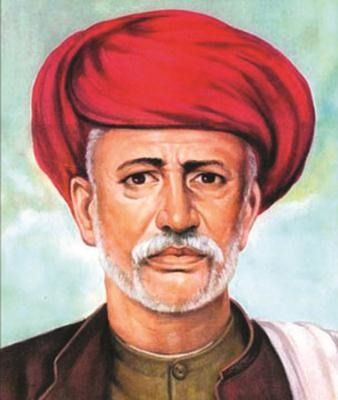
Jyotirao Phule died on 28 November 1890, but his ideas never did. His life was a torch of truth, and his legacy is a map for justice. He taught India to:
- Question power
- Educate the oppressed
- Build a society rooted in equality
He didn’t just fight caste—he fought ignorance, fear, and silence. He didn’t just uplift the Bahujan—he redefined what it means to be human.
Today, Jyotirao Phule is:
- Honored as Mahatma Phule
- Celebrated in Maharashtra and across India
- A foundational figure for Dalit, OBC, and feminist movements
His vision of an egalitarian society continues to inspire:
- Teachers in rural schools
- Activists in urban protests
- Writers, poets, and thinkers across generations
“Let us awaken the oppressed, wherever they are. Let us build a world where truth is the highest ritual.” — Jyotirao Phule
His name is not just remembered—it is invoked, lived, and loved.
🧭 Why Jyotirao Phule Matters Today
🔥 Section 1: India’s First Voice Against Caste Injustice
In the mid-19th century, when caste oppression was normalized and unquestioned, Jyotirao Phule became the first Indian to publicly challenge it. He declared that the caste system was not divine—it was a tool of exploitation. His book Gulamgiri (Slavery) compared caste to racial slavery in America, showing how Brahminical myths were used to enslave Shudras and Ati-Shudras.
Jyotirao Phule didn’t just write—he organized. He founded the Satyashodhak Samaj in 1873 to unite the oppressed and reject Brahminical dominance. He conducted inter-caste marriages, trained Bahujan leaders, and created a platform for truth-seeking.
His courage was unmatched. At a time when questioning caste could lead to social boycott or violence, Jyotirao Phule stood firm. He became the first voice of resistance, and his echo still resonates in every Dalit protest, every Bahujan manifesto, and every demand for dignity.
📚 Section 2: Empowering Women and the Oppressed Through Education
Jyotirao Phule believed that education was the whipcord that could strike down oppression. In 1848, he opened India’s first school for girls in Pune. His wife, Savitribai Phule, became the first female teacher. Together, they built a network of schools for:
- Girls from all castes
- Dalit children
- Muslim students
- Widows and rape survivors
Jyotirao Phule’s curriculum rejected Sanskrit and rituals. Instead, it focused on:
- Agriculture and science
- Ethics and rationalism
- History from the Bahujan perspective
He saw education not as a privilege, but as a birthright. He believed that every child, regardless of caste or gender, deserved to learn. His schools were attacked, his students were mocked, but he never stopped.
Today, every inclusive classroom, every Dalit graduate, and every girl who enters school is a living tribute to Jyotirao Phule.
🕉️ Section 3: Challenging Religious Orthodoxy with Reason and Compassion
Jyotirao Phule was a rationalist. He believed that religion should serve humanity, not enslave it. He exposed how Brahmin priests used rituals to extract money and maintain control. In Brahmananche Kasab, he mocked the priestly profession as a business, not a spiritual path.
He didn’t reject spirituality—he redefined it. For Jyotirao Phule, true religion was:
- Compassion for the poor
- Respect for women
- Truth over tradition
He conducted marriages without priests, encouraged moral reasoning, and promoted a new ethical framework. His Satyashodhak Samaj became a counter-institution to temples, offering a space for debate, dignity, and reform.
Jyotirao Phule’s challenge to orthodoxy was not just intellectual—it was emotional. He wanted people to feel free, not fearful. His compassion made him a spiritual revolutionary, and his reason made him a moral architect.
🧠 Section 4: Laying the Intellectual Foundation for Social Justice Movements
Jyotirao Phule was not just a reformer—he was a thinker, writer, and strategist. His books were written in Marathi, the language of the people. He used metaphors, satire, and historical analysis to awaken the masses.
His intellectual contributions include:
- Gulamgiri – a critique of caste slavery
- Shetkaryacha Asud – a manifesto for farmer justice
- Trutiya Ratna – a dialogue on education and reform
Jyotirao Phule’s ideas influenced:
- Dr. B.R. Ambedkar, who called him his intellectual ancestor
- Periyar, who adopted his rationalist approach
- Dalit Panthers, who quoted him in their manifestos
His writings laid the philosophical foundation for modern social justice. He didn’t just fight injustice—he explained it, dismantled it, and offered alternatives.
Today, every activist who speaks of equality, every educator who teaches resistance, and every thinker who questions power stands on the shoulders of Jyotirao Phule.
❤️ Section 5: Revolution Begins with Education, Courage, and Compassion
Jyotirao Phule’s life reminds us that true revolution is not loud—it is lasting. He didn’t seek fame or power. He sought truth, dignity, and justice. His tools were:
- Education, to awaken minds
- Courage, to challenge power
- Compassion, to heal wounds
He taught us that change begins in the classroom, in the shelter, in the heart. He showed that a single school can shake an empire, and that a single act of kindness can rewrite history.
Jyotirao Phule’s revolution was not just political—it was personal. He adopted a child from a Brahmin widow, cared for rape survivors, and trained women to lead. His legacy is not just in books—it is in lives.
“Let us educate to liberate. Let us love to uplift.” — Jyotirao Phule
🛡️ Jyotirao Phule’s Revolutionary Perspective on Shivaji Maharaj and Sambhaji Maharaj
Reclaiming Legacy Through Bahujan Courage, Ethical Leadership, and Historical Truth
🪶 1. Reclaiming Shivaji Maharaj: A Bahujan Hero, Not a Brahminical King
Jyotirao Phule was one of the first thinkers to reinterpret Shivaji Maharaj’s legacy from a Bahujan perspective. In a time when Brahmin historians glorified Shivaji as a Hindu king chosen by divine will, Jyotirao Phule challenged that narrative. He argued that Shivaji was not a Brahminical ruler but a protector of the oppressed, especially Shudras and women.
Phule admired Shivaji for:
- Rejecting caste-based rituals
- Appointing non-Brahmins to key positions
- Protecting women from Mughal and feudal violence
- Building a kingdom based on merit, not birth
In his book Shivaji Raja Bhonsle Charitra, Jyotirao Phule wrote with deep emotion and pride, portraying Shivaji as a symbol of Bahujan resistance. He emphasized that Shivaji’s greatness lay not in his royal blood, but in his moral courage and inclusive governance.
🔥 2. Sambhaji Maharaj: The Martyr of Freedom and Knowledge
Jyotirao Phule held Sambhaji Maharaj in equally high regard. While mainstream history often painted Sambhaji as reckless or controversial, Phule saw him as a martyr for freedom and intellectual bravery.
Sambhaji:
- Refused to convert under torture
- Defended his kingdom against Mughal aggression
- Was brutally executed for standing by his principles
Jyotirao Phule admired Sambhaji’s unbreakable spirit. He saw in him a reflection of the Bahujan struggle—a man who chose death over surrender, who valued truth over compromise. For Phule, Sambhaji was not just a prince—he was a moral warrior, whose sacrifice must be remembered with reverence.
📚 3. Writing History from Below: Phule’s Revolutionary Lens
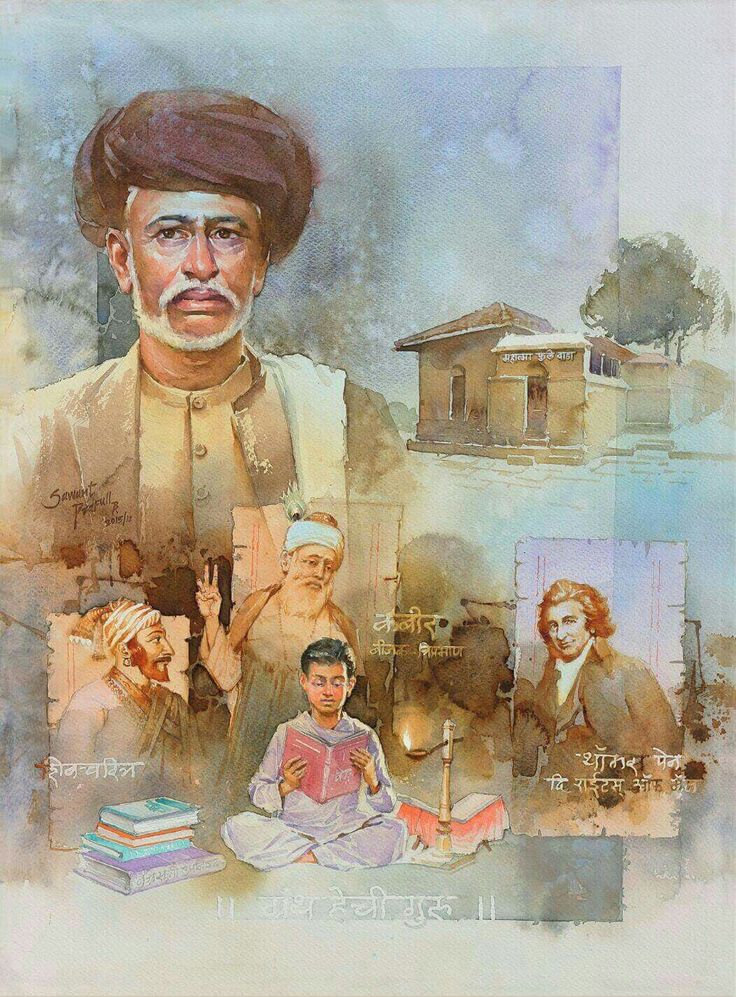
Jyotirao Phule believed that history had been hijacked by Brahmin scholars, who glorified their own caste while erasing the contributions of Shudras, Dalits, and women. His writings on Shivaji and Sambhaji were part of a larger mission to rewrite Indian history from the Bahujan perspective.
He used:
- Marathi language, accessible to the masses
- Emotional storytelling, rooted in lived experience
- Historical evidence, to challenge myths and distortions
Phule’s work was not just academic—it was activist literature, designed to awaken pride, provoke thought, and inspire action. He wanted Bahujans to see themselves not as victims of history, but as creators of legacy.
🧠 4. Shivaji and Sambhaji as Models of Ethical Leadership
For Jyotirao Phule, leadership was not about power—it was about moral responsibility. He saw Shivaji and Sambhaji as rare examples of rulers who:
- Protected the weak
- Respected women
- Valued merit over caste
- Fought tyranny with courage
Phule contrasted their leadership with the Brahminical elite, who he accused of exploiting religion for personal gain. He believed that true kingship lies in service, and that Shivaji and Sambhaji embodied that ideal.
This interpretation became central to Phule’s vision of Bahujan empowerment—a call to lead with ethics, not ego.
🌍 5. Legacy and Relevance Today
Even in 2025, Jyotirao Phule’s thoughts on Shivaji and Sambhaji Maharaj remain deeply relevant. In a time of identity politics and historical revisionism, Phule’s lens offers:
- A grounded, inclusive narrative
- A celebration of Bahujan pride
- A challenge to caste-based historiography
His writings remind us that:
- Shivaji was not just a Maratha king—he was a protector of the people
- Sambhaji was not just a martyr—he was a symbol of resistance
- History must be written with truth, compassion, and courage
“Let us remember Shivaji not for his sword, but for his justice. Let us honor Sambhaji not for his crown, but for his sacrifice.” — Jyotirao Phule.
🔚 Conclusion: The Legacy of Shivaji and Sambhaji Through the Eyes of Jyotirao Pule
In the heart of 19th-century Maharashtra, Jyotirao Pule stood as a lone torchbearer of truth. While others glorified kings through caste-colored lenses, Jyotirao Pule reimagined history as a tool of liberation. His writings on Shivaji Maharaj and Sambhaji Maharaj were not just historical—they were revolutionary acts of reclamation.
Jyotirao Pule saw Shivaji not as a divine monarch, but as a protector of the oppressed. He admired Shivaji’s courage to appoint non-Brahmins, his refusal to bow to ritualistic dominance, and his commitment to justice over hierarchy. For Jyotirao Pule, Shivaji symbolized the possibility of ethical leadership rooted in merit and morality.
Sambhaji Maharaj, often misunderstood by mainstream historians, was honored by Jyotirao Pule as a martyr of truth. His refusal to convert under torture, his intellectual bravery, and his sacrifice became, in Pule’s eyes, a mirror of the Bahujan struggle—unbreakable, principled, and proud.
Through these reinterpretations, Jyotirao Pule offered the Bahujan masses a new lens: one that replaced shame with pride, silence with speech, and hierarchy with equality.
🧠 Rewriting History with Purpose
Jyotirao Pule didn’t just write history—he rewrote it from the ground up. He used the Marathi language to reach the people, not the elite. He challenged Brahminical narratives and gave voice to those erased from textbooks. His work was a declaration: Bahujans have a legacy, and it begins with truth.
🧭 A Blueprint for Bahujan Empowerment
By elevating Shivaji and Sambhaji as moral leaders rather than caste-bound rulers, Jyotirao Pule created a blueprint for Bahujan empowerment. He taught that leadership must be earned through service, not inherited through birth. His vision was clear: education, courage, and compassion are the true weapons of revolution.
🌍 Relevance in Today’s India
In today’s India, caste injustice still lingers. Historical narratives are still contested. But Jyotirao Pule’s lens offers clarity. His reinterpretation of Shivaji and Sambhaji reminds us that:
- True leadership uplifts the oppressed
- History must be reclaimed by the marginalized
- Pride must be rooted in ethics, not ego
Every Dalit student, every feminist voice, every Bahujan movement carries the spirit of Jyotirao Pule.
❤️ Final Reflection: Truth Is the Highest Ritual
Jyotirao Pule taught us that history is not just about kings—it’s about courage. That leadership is not about power—it’s about purpose. And that revolution is not about violence—it’s about vision.
“Let us remember Shivaji not for his sword, but for his justice. Let us honor Sambhaji not for his crown, but for his sacrifice. Let us walk the path of truth, lit by the torch of Jyotirao Pule.”
His name is not just remembered—it is invoked, lived, and loved.
Internal Links: 1.https://historyverse7.com/shivaji-maharaj/ 2.https://historyverse7.com/subhash-chandra-bose/
External Links: 1.https://en.wikipedia.org/wiki/Jyotirao_Phule 2.https://www.britannica.com/biography/Jyotirao-Phule
📘FAQs About Jyotirao Phule
1. What would Jyotirao Phule say if he saw India today?
Ans: If Jyotirao Phule walked through modern India, he’d see both progress and unfinished battles. He’d smile at girls in school uniforms, Dalit scholars in universities, and inter-caste couples walking freely. But he’d also weep at caste-based violence, gender injustice, and the commercialization of education. He’d remind us
2. Why did Jyotirao Phule write history when others were writing scriptures?
Ans: Because Jyotirao Phule knew that whoever controls history controls identity. While others wrote scriptures to preserve power, Phule wrote Shivaji Raja Bhonsle Charitra to reclaim Bahujan pride. He believed that truth must be documented by those who live it, not those who distort it. His pen was his plough—turning over the soil of lies to plant seeds of awakening.
3. How did Jyotirao Phule turn pain into power?
Ans: Jyotirao Phule was humiliated at a Brahmin wedding for daring to attend as a Shudra. That moment didn’t break him—it ignited him. He turned personal insult into public purpose. Instead of revenge, he chose reform. Instead of silence, he chose speech. His life teaches us:
“Your wound can be your weapon—if you choose to fight with wisdom.”
4. What was Jyotirao Phule’s most radical act?
Ans: It wasn’t founding schools or writing books—it was loving fearlessly. When Jyotirao Phule adopted a child born to a raped Brahmin widow, he shattered every caste code. He didn’t just preach equality—he lived it in his home. That act of compassion was more revolutionary than any slogan. It said:
“Humanity is not a theory. It’s a choice you make every day.”
5. What is the one thing Jyotirao Phule never compromised on?
Ans: Truth. For Jyotirao Phule, truth was sacred—not the kind found in rituals, but the kind found in reason, justice, and lived experience. He called his movement the Satyashodhak Samaj—the Society of Truth Seekers—because he believed that truth is the highest form of worship. He didn’t want followers. He wanted thinkers.
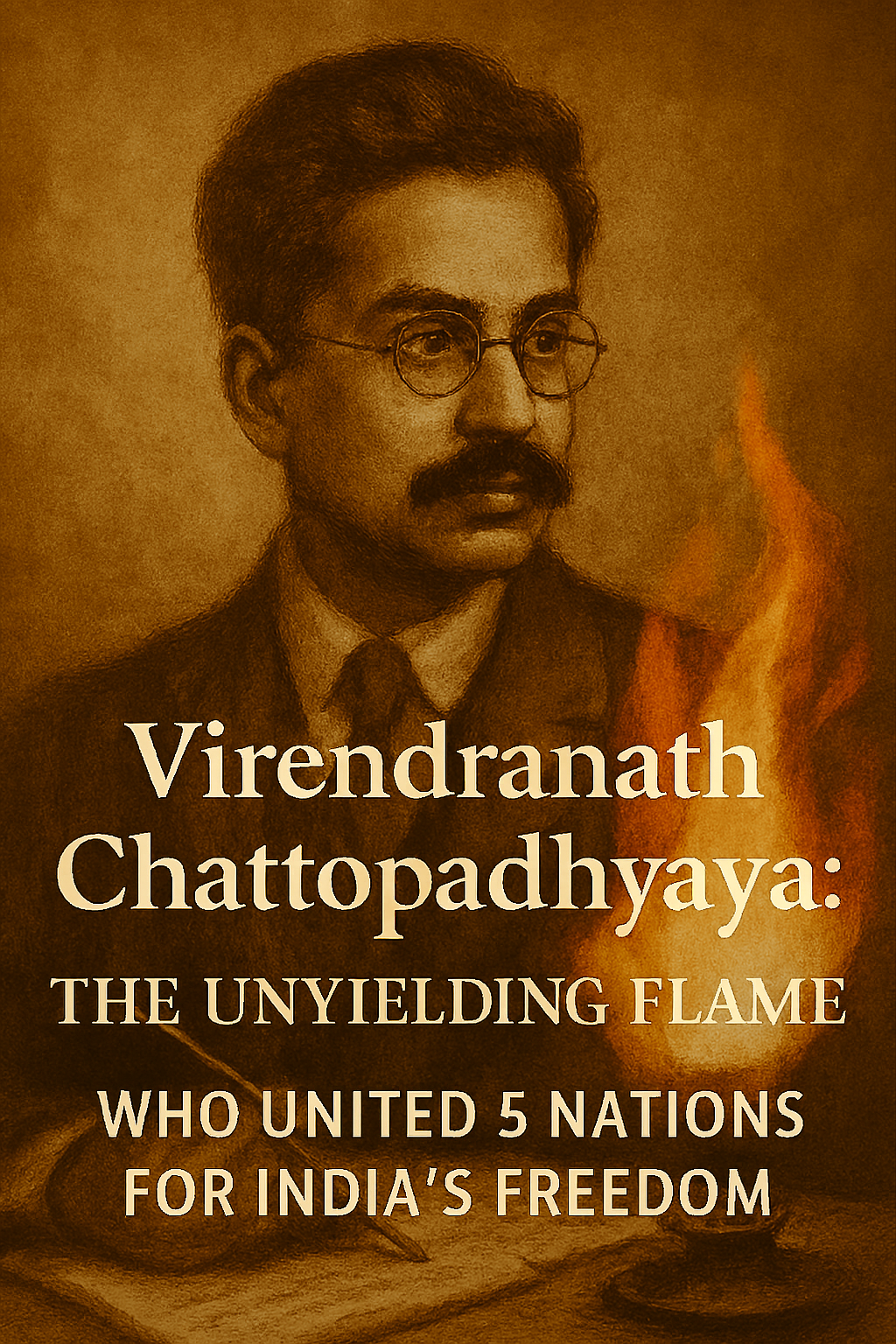
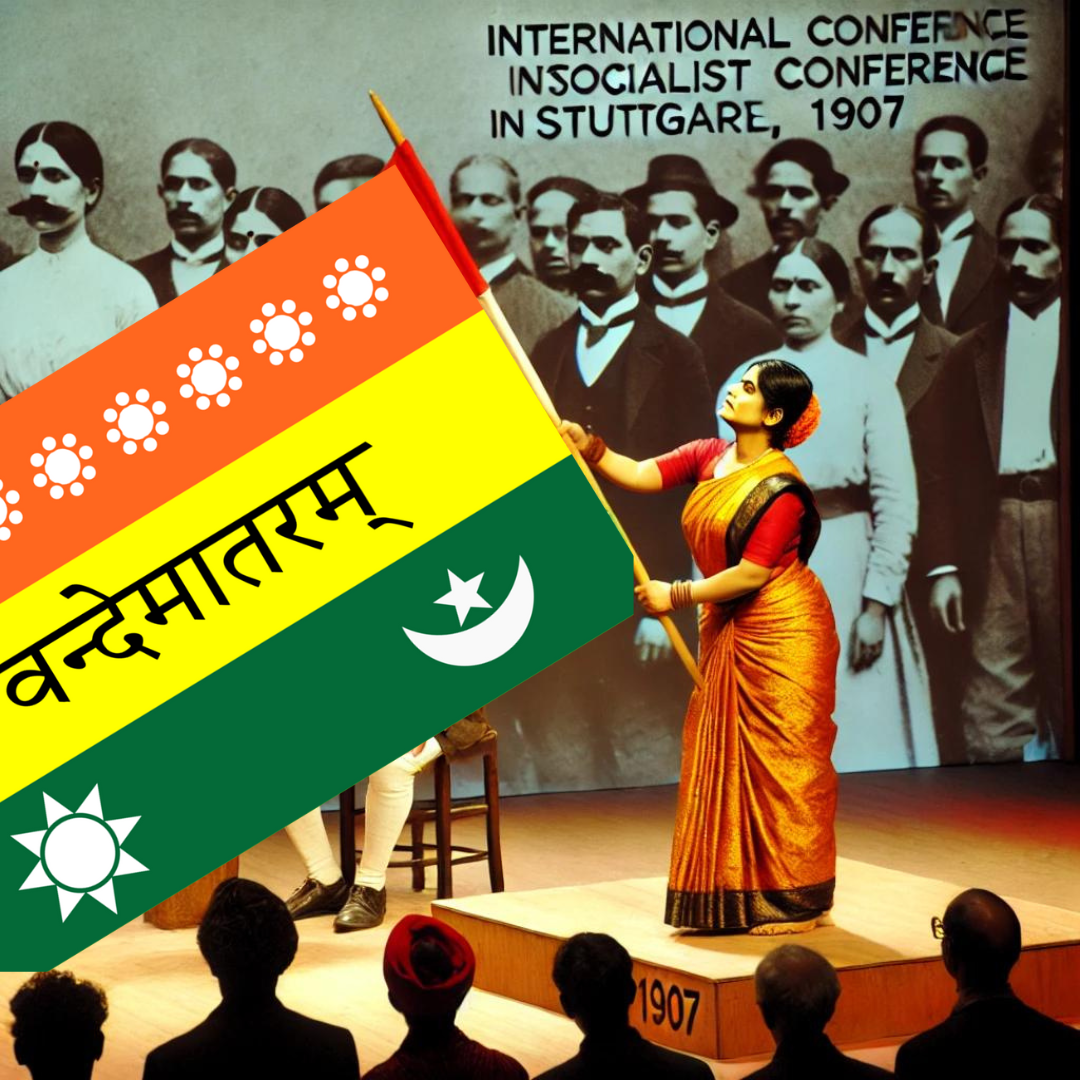
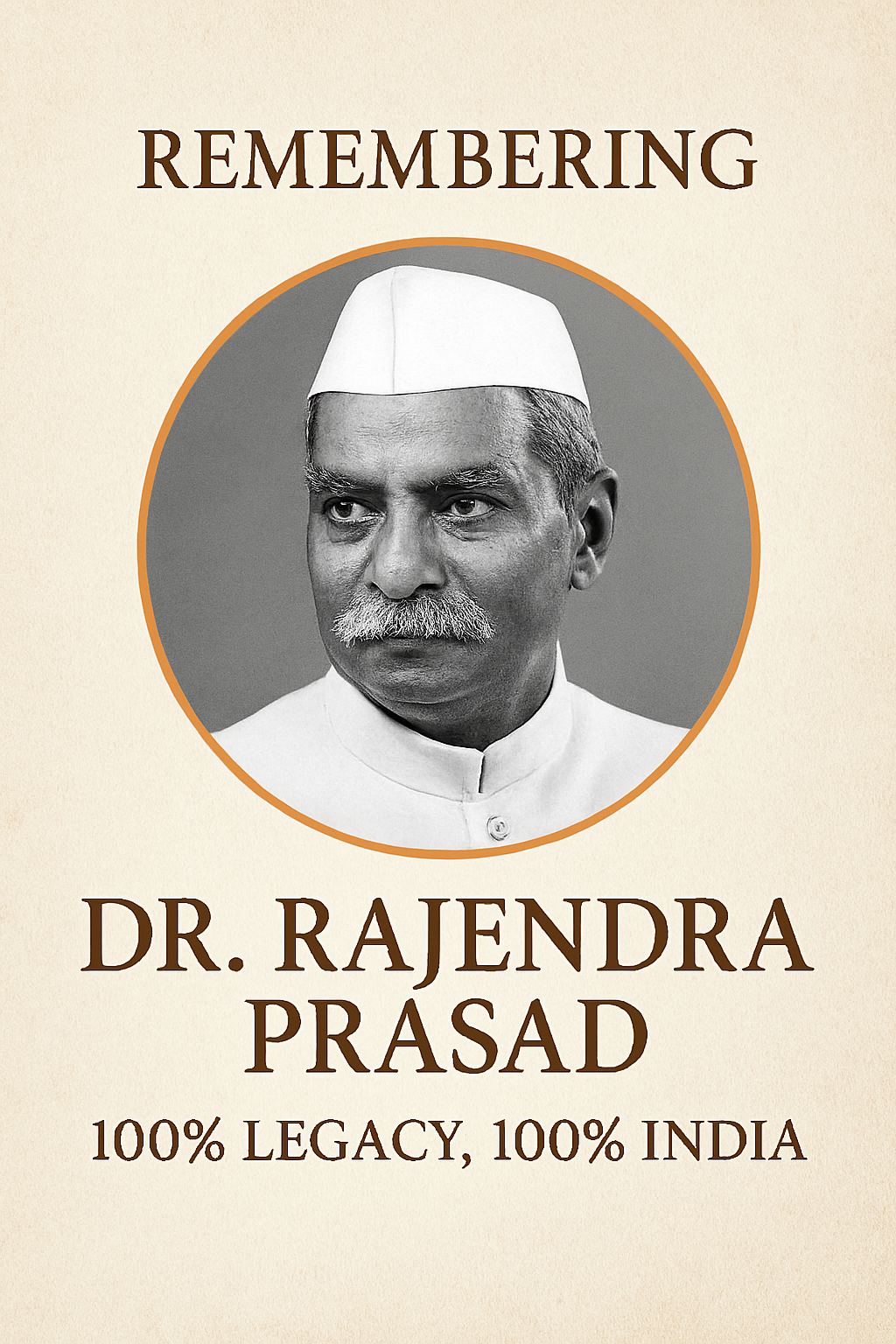
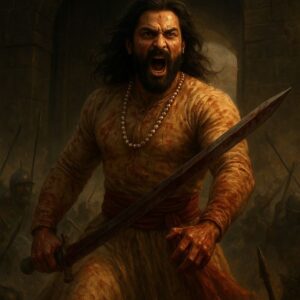
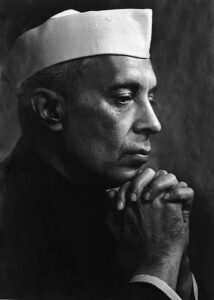
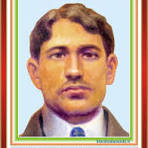
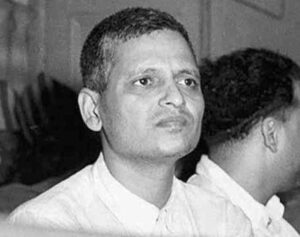
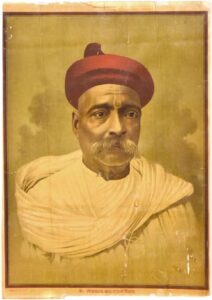
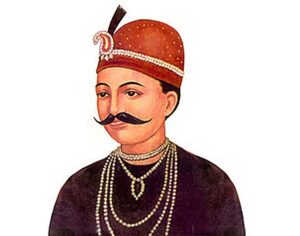
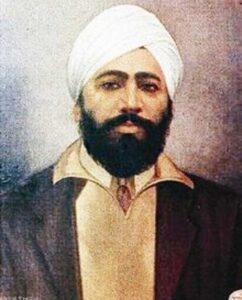
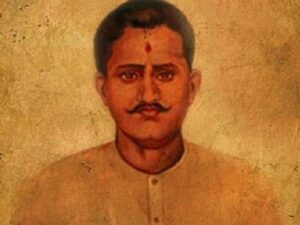
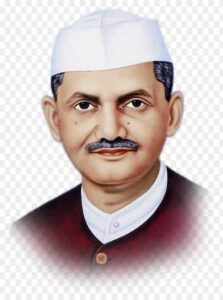
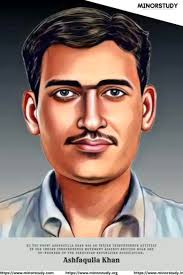
2 comments